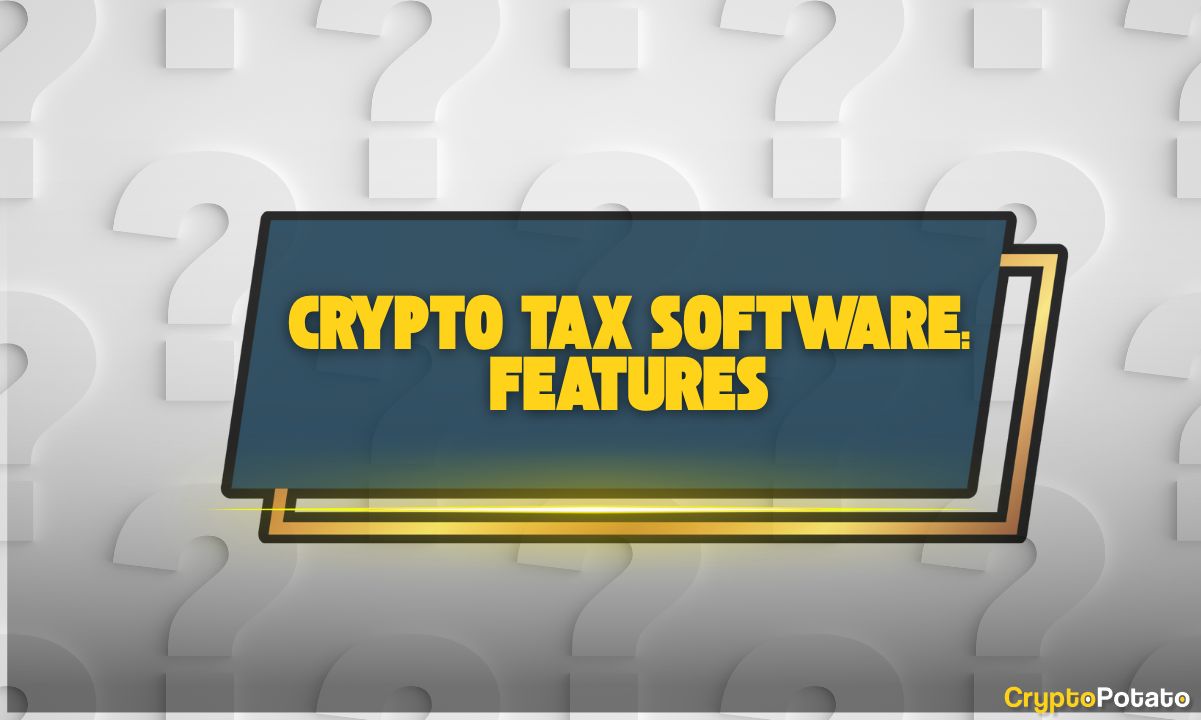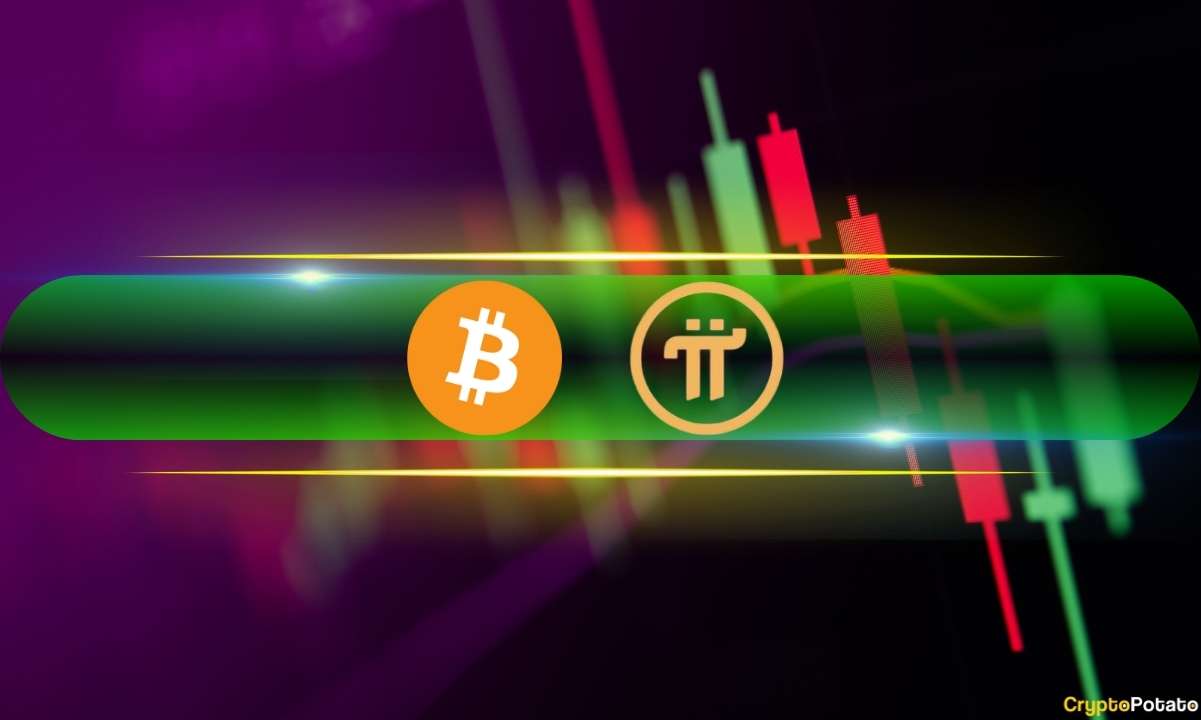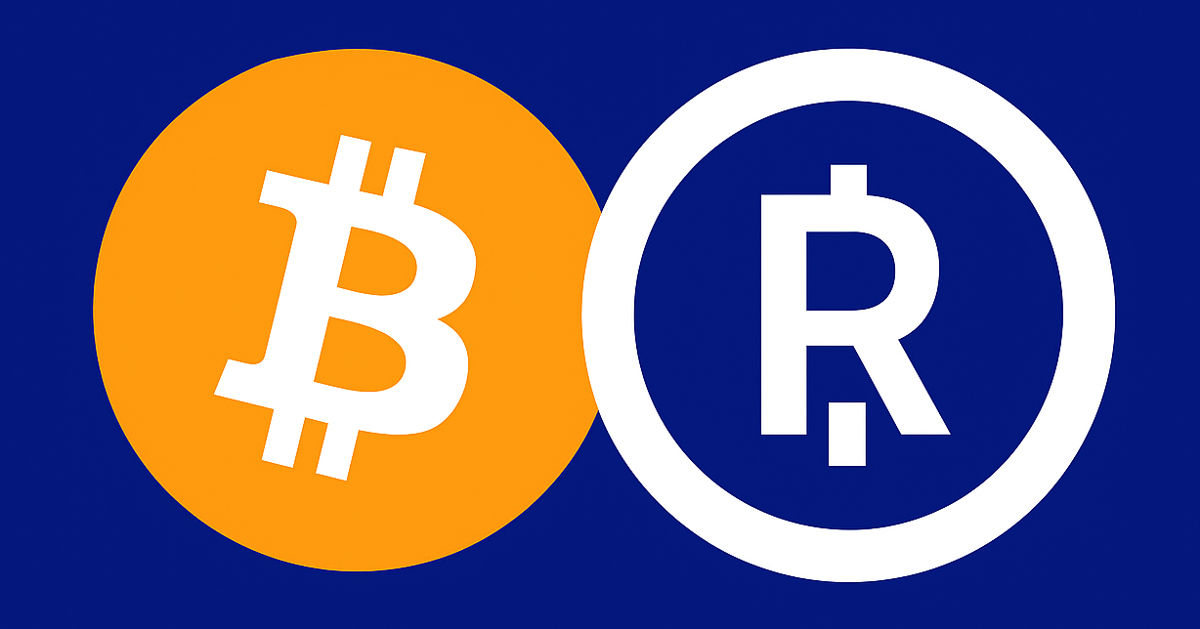SuiLive Feed
Sui breaking news and instant alerts. Crypto Feed's minimalist interface delivers verified headlines, price movements, and protocol updates the moment they happen. Fast, focused, no fluff.
 Kalshi Sues New York to ‘Protect’ Sports Prediction Markets
Kalshi Sues New York to ‘Protect’ Sports Prediction MarketsKalshi, a federally regulated derivatives exchange, filed a lawsuit in the United States District Court for the Southern District of New York challenging the state’s attempt to shut down its sports prediction markets, arguing that New York’s enforcement actions violate federal authority over derivatives trading. The complaint, filed as KalshiEX LLC v. Robert Williams, seeks to stop the New York State Gaming Commission from imposing civil penalties and fines on the Manhattan-based exchange for offering event contracts that allow users to speculate on sports outcomes.Source: BWBXThe legal battle erupted after state regulators sent Kalshi a cease-and-desist letter on October 24, 2025, claiming the platform’s sports-related contracts violated New York gambling laws and demanding immediate shutdown of operations within the state. Kalshi contends that Congress granted the Commodity Futures Trading Commission exclusive jurisdiction over derivatives trading on designated contract markets, making state interference both field-preempted and conflict-preempted under the Supremacy Clause of the U.S. Constitution.Federal Authority Clashes With State Gambling OversightKalshi’s argument centers on its status as a CFTC-designated contract market, a designation the commission unanimously granted in 2020 after determining the exchange met stringent regulatory requirements. On January 22, 2025, Kalshi self-certified its first sports contracts under federal law, offering event contracts on outcomes such as NCAA tournament advancement and the U.S. Open Golf Championship winner. @Kalshi has filed a lawsuit against the Nevada Gaming Control Board and the New Jersey Division of Gaming Enforcement.#Kalshi #Cryptohttps://t.co/hgPBmcFV1i— Cryptonews.com (@cryptonews) March 30, 2025 The exchange operates under the Commodity Exchange Act, which Congress deliberately designed to preempt state regulation and prevent a patchwork of potentially conflicting state laws across all 51 jurisdictions. Federal oversight requires Kalshi to maintain extensive recordkeeping, meet liquidity standards, prevent market manipulation, and enforce position limitations across a nationally accessible platform.New York gaming regulators countered that Kalshi’s sports-based contracts constitute sports wagering under state Penal Law and Racing Law, requiring a sports gaming license to operate legally within state borders. The commission threatened criminal action and civil penalties unless Kalshi immediately ceased offering what regulators characterized as illegal gambling opportunities to New York residents.Prediction Market’s Existential ThreatThe lawsuit extends beyond Kalshi’s immediate business concerns, potentially affecting how prediction markets operate across state lines amid diverging regulatory philosophies. Robinhood recently filed similar lawsuits in New Jersey and Nevada after those states refused to recognize federal court rulings favoring Kalshi, with officials warning the brokerage firm that offering event contracts would constitute willful violations of law. @RobinhoodApp has sued Nevada and New Jersey, accusing the states of unfairly blocking its entry into the sports event contracts.#Robinhood #Cryptohttps://t.co/y6qGcRa09C— Cryptonews.com (@cryptonews) August 20, 2025 Event contracts function as derivatives that allow stakeholders, such as advertisers, sponsors, networks, and sportsbooks, to hedge exposure to economically significant sports outcomes, with prices fluctuating based on market perceptions of event probability. Kalshi argues that blocking access to these federally authorized instruments imposes substantial economic and reputational harm while creating uncertainty for consumers and business partners.The platform faces a potential existential threat if forced to implement state-by-state restrictions, as the CFTC could take action against it for violating requirements that designated contract markets operate as truly national exchanges accessible to all participants. They noted that developing technological solutions to block specific state residents while maintaining platform integrity would require complex, untested systems that could undermine Kalshi’s regulatory standing.New York’s Growing Regulatory TensionsNew York’s aggressive stance toward prediction markets resembles broader state-level efforts to regulate emerging financial technologies, including cryptocurrency transactions that remain outside comprehensive federal frameworks. In August, state Assembly Member Phil Steck introduced legislation imposing a 0.2% excise tax on all digital asset transactions, with proceeds earmarked for upstate school substance abuse prevention programs.The proposed tax, which should have taken effect on September 1, 2025, places compliance responsibility on anyone making or effectuating crypto transfers, potentially creating challenges for exchanges, traders, and decentralized finance protocols. New York Assembly bill seeks a 0.2% excise tax on crypto and NFT transactions, targeting the digital asset sector for substance abuse prevention funding.#Crypto #Taxhttps://t.co/fx48tYwUjA— Cryptonews.com (@cryptonews) August 15, 2025 Assembly Bill A08966 defines digital assets broadly as anything issued or transferred using distributed ledger or blockchain technology, encompassing currencies, coins, and non-fungible tokens.Global jurisdictions have pursued vastly different approaches to crypto taxation and regulation, ranging from the United Arab Emirates’ emerging tax reporting framework to Hong Kong’s full licensing regime that encourages crypto business growth.The post Kalshi Sues New York to ‘Protect’ Sports Prediction Markets appeared first on Cryptonews.
 Sui Tank 2025: Kevin O’Leary Joins Builders in High-Stakes Pitch Event
Sui Tank 2025: Kevin O’Leary Joins Builders in High-Stakes Pitch EventAt SuiFest 2025, builders pitched innovative projects to Kevin O’Leary and Mysten Labs Co-Founders, vying for $150,000 in funding. Discover how these teams fared in a unique pitch event. (Read More)

 Kalshi files federal lawsuit against New York regulators
Kalshi files federal lawsuit against New York regulatorsKalshi has filed a lawsuit against New York regulators, as the state is looking to classify its sports event contracts as unlicensed gambling and enforce a cease-and-desist order threatening civil and criminal penalties. Kalshi filed the federal complaint on Oct.…
- Crypto Treasury Firms Stare Down Leverage Crisis as NAV Discounts Force Risky Moves
ETHZilla has sold $40 million in Ethereum to fund stock buybacks amid a 30% NAV discount, highlighting growing distress in the crypto treasury sector. Meanwhile, Japan’s Metaplanet trades below its Bitcoin reserves, spotlighting escalating risks for the industry. Analysts warn that crypto treasury firms face three dangerous options likely to fuel a sector-wide leverage expansion if market pressures continue. Treasury Firms Confront Valuation Challenges The Bitcoin treasury model faces new pressures as several firms fall below net asset value (NAV). Metaplanet’s modified Net Asset Value (mNAV) recently slipped to 0.99 despite 115.7% Bitcoin-related revenue growth in Q3. While it has since recovered to 1.03, the decline marked an unusual scenario where the company’s market value went lower than its direct Bitcoin holdings. Metaplanet mNAV. Source: Metaplanet Analytics Since June, Metaplanet shares have plummeted about 70%, erasing the previous premium for the corporate Bitcoin treasury strategy. This mNAV inversion suggests declining market faith in Bitcoin-focused business models and raises key questions about their resilience under pressure. Fidelity Digital Assets research indicates that non-mining public companies now hold over 700,000 BTC and 3 million ETH, a substantial concentration of these assets. Current conditions expose vulnerabilities in this approach to asset management. Corporate Buying Pauses, Markets at Risk Recent market analysis uncovers a notable lack of corporate Bitcoin purchases following drawdowns. Coinbase’s Head of Institutional Research, David Duong, points out that Bitcoin buying by treasury companies is near year-to-date lows, with no visible recovery during rebounds. Where are the DATs? BTC digital asset treasury companies (DATs) have largely ghosted the post-Oct 10 drawdown and are yet to re-engage. Over the last two weeks, BTC buying by DATs fell to near year-to-date lows and has not meaningfully recovered, even on green days. A short 淋… pic.twitter.com/uscTvUSOTu— David Duong️ (@Dav1dDuong) October 25, 2025 This absence weakens market structure, as such firms typically shore up demand during volatile phases. Without discretionary balance sheet deployment, it is clear that most treasuries have limited confidence in today’s conditions. On Ethereum, buying remains concentrated in one entity. If this support disappears, the market’s vulnerability will increase sharply, further exposing its reliance on a small cadre of large buyers. ETHZilla’s $40 million Ethereum sale for stock buybacks highlights the tough balancing acts now required. 0/ ETHZilla today announced share buyback of approximately $40 million as ETHZ trades at a significant discount to NAV. Since Friday, October 24, we have repurchased ~600,000 shares for roughly $12M under the $250M buyback authorization, and plan to continue to repurchase our…— ETHZilla (@ETHZilla_ETHZ) October 27, 2025 While the move aims to support share value as discounts swell, it marks a shift away from crypto asset accumulation strategies. Treacherous Paths Facing Treasury Firms Against these backdrops, Charles Edwards of Capriole Investments outlines three options for treasury companies trading below mNAV. Each option carries significant risk but has the potential to reshape how the sector manages crypto assets. “The masses of treasury companies trading below mNAV have only 3 options: 1. Sell underlying = bad for coin + bad for business 2. Get acquired 3. Grow leverage to increase ‘yield’ and stand out,” Edwards outlined. The first path, selling crypto reserves, could damage both asset prices and business models. Liquidations might signal surrender and drive valuations even lower. The second choice, pursuing acquisition, may offer distressed firms an exit. However, industry consolidation will reduce independent players and concentrate holdings even further. The third, and riskiest, option is increasing leverage to enhance yields. Edwards cautions that this gives rise to “incentives aligned for massive leverage growth of the sector,” a scenario that could spark a wider crisis if markets weaken. In the coming weeks, treasury companies will face critical tests. They must navigate these pressing challenges without unbalancing the market through risky leverage. Metaplanet’s extraordinary general meeting on December 22 could reveal how such firms plan to adapt and survive amid lasting mNAV pressures. The post Crypto Treasury Firms Stare Down Leverage Crisis as NAV Discounts Force Risky Moves appeared first on BeInCrypto.
 Predictions platform Kalshi sues NY regulator claiming overreach
Predictions platform Kalshi sues NY regulator claiming overreachKalshi has sued New York’s gambling regulator, claiming the state is overreaching its authority by issuing a cease and desist order.
 Predictions platform Kalshi sues NY regulator, claiming overreach
Predictions platform Kalshi sues NY regulator, claiming overreachKalshi has sued New York’s gambling regulator, claiming the state is overreaching its authority by issuing a cease and desist order.
 Kalshi Sues New York Regulators After Crypto.com's Nevada Loss
Kalshi Sues New York Regulators After Crypto.com's Nevada LossBy suing first, Kalshi controls the narrative to focus on federal preemption rather than contract legality, Decrypt was told.
 Kalshi Sues New York Regulators After Crypto.com's Nevada Loss
Kalshi Sues New York Regulators After Crypto.com's Nevada LossBy suing first, Kalshi controls the narrative to focus on federal preemption rather than contract legality, Decrypt was told.
 MetaMask Airdrop Finally Happening? Mysterious Claim Site Reignites MASK Token Speculation
MetaMask Airdrop Finally Happening? Mysterious Claim Site Reignites MASK Token SpeculationA newly discovered domain linked to MetaMask has reignited speculation that the long-rumored MASK token airdrop could be imminent. The emergence of a password-protected claim portal at claim(.)metamask(.)io has fueled widespread belief that Consensys’ popular Ethereum wallet is preparing to roll out its long-awaited token distribution. INTEL: MetaMask has registered a domain for claiming MetaMask tokens, suggesting the airdrop may be near— Solid Intel (@solidintel_x) October 27, 2025 How Soon Is the MetaMask Airdrop? The Countdown to MASK BeginsThe domain, first spotted earlier this week, features a login page that requests user authentication but provides no additional information. While MetaMask has not officially confirmed any connection to the site, blockchain analysts and community members say its design and domain structure align with MetaMask’s official ecosystem. The discovery coincides with the rollout of MetaMask Rewards, a new point-based loyalty program announced earlier this month, intensifying speculation that the claim page may soon go live.In early October, MetaMask unveiled a $30 million rewards initiative designed to incentivize users for on-chain activity.Source: MetaMaskThe program allows participants to earn points for swapping tokens, bridging assets, and other DeFi interactions, particularly those carried out on Linea, Consensys’ Ethereum Layer-2 network.Industry observers believe these reward points could later serve as eligibility criteria for claiming MASK tokens in a potential airdrop.Consensys CEO Joe Lubin previously confirmed that a MetaMask token would arrive “sooner than you would expect,” calling it a step toward decentralization.Lubin described the reward system as “a bridge between the wallet’s DeFi utility and its next stage of decentralization,” further strengthening expectations that the MASK token is nearing release.Source: PolymarketThe odds of a MetaMask token launch this year have also surged in prediction markets. On Polymarket, traders now estimate a 19% chance of a MASK airdrop before year-end, a sharp rise from earlier forecasts.Still, not everyone is convinced the new claim page signals an immediate launch. MetaMask’s Director of Product, Christian Montoya, said that the company is “launching a new loyalty program” as part of its initial rewards phase, but cautioned users to remain alert to phishing attempts.“You will not have to find some account on social media that you’ve never heard of giving you a link,” Montoya said. “It will be in the wallet. It’ll be on our main website.”MetaMask Evolves Into All-in-One DeFi Platform as Token Rumors GrowRumors of a MetaMask token have persisted since 2021, when developers first floated the idea of community ownership through a governance token. Every 6 months @MetaMask teases about an airdrop, drives volume to their swaps/bridges and when they have farmed a few million they go silent.Been hearing an airdrop since 2021, and now they come out with a point system, nice way to farm more and not care about OGs/supporters.…— 0000.eth (@Epicvillages) October 4, 2025 However, until now, MetaMask has avoided confirming any concrete distribution plans despite multiple ecosystem expansions, from token swaps and bridges to its latest integration of on-chain derivatives trading.On October 8, the wallet introduced MetaMask Perps, a new feature allowing users to trade perpetual futures directly within the app. MetaMask Unleashes “CEX Killer” With New In-Wallet Perps TradingMetaMask has entered the on-chain derivatives market with the launch of perpetual futures trading directly inside its mobile app, a move seen as a challenge to centralized exchanges.https://t.co/TZvpKKxLZO pic.twitter.com/Aouwt2guFJ— Cryptonews.com (@cryptonews) October 8, 2025 The launch marks MetaMask’s most important step toward becoming an all-in-one trading platform, placing it in direct competition with centralized exchanges such as Binance and OKX.In parallel, in August, governance discussions revealed plans to launch a native stablecoin, MetaMask USD (mUSD), developed in partnership with Stripe. The proposed token would operate on the M⁰ network for decentralized issuance and settlement, offering a fiat-backed alternative to existing stablecoins like USDC and USDT. Although the proposal was later removed, sources close to the matter confirmed that the project remains under development. MetaMask adds Google and Apple login to simplify wallet access, eliminating the need for complex seed phrase management.#MetaMask #Wallethttps://t.co/jjy80DdR9e— Cryptonews.com (@cryptonews) August 27, 2025 Earlier that same month, MetaMask also rolled out social login functionality, allowing users to create or recover wallets using Google or Apple credentials, part of a broader effort to simplify onboarding while maintaining self-custody principles.The wallet’s recent hint follows a backdrop of growing airdrop speculation across the crypto sector. Airdrop Season Returns: Linea’s Token Launch Sparks Wave of New DistributionsFollowing Consensys’ Linea token launch in September, which distributed over 9 billion tokens to eligible users, other major Web3 projects have followed suit. Linea has promised to launch its token soon. Can it revive the struggling L2 market after failures like Scroll?#Linea #L2 #Airdrophttps://t.co/1L8mznI06P— Cryptonews.com (@cryptonews) February 10, 2025 Polymarket, the decentralized prediction market, confirmed plans last week to release its POLY token through a retroactive airdrop.Chief Marketing Officer Matthew Modabber said the team aims to design a token “with true utility and longevity.” @Polymarket has confirmed a native token launch and an airdrop are planned after launching its U.S. app. #Crypto #Polymarket #POLY https://t.co/h4ENyRsbuS— Cryptonews.com (@cryptonews) October 24, 2025 Elsewhere, speculation continues around Base, the Coinbase-backed Layer-2 network, which recently hinted that it may explore a token after previously ruling it out. The shift follows Linea’s successful distribution and has added to the growing belief that a new wave of “airdrop season” could be underway. Base has explored launching a network token, reversing Coinbase’s earlier stance. @jessepollak and @brian_armstrong confirmed discussions. #Coinbase #Base https://t.co/5vMMa9mHQ3— Cryptonews.com (@cryptonews) September 15, 2025 Still, MetaMask remains the most anticipated project among them. The wallet boasts over 30 million monthly active users, making any potential MASK airdrop one of the largest events in DeFi history if confirmed. However, the company has repeatedly stressed that its reward system is designed for sustainable engagement, not one-time token farming.Developers said the program’s structure seeks to track consistent user behavior across DeFi activities rather than encourage short-term trading spikes.The post MetaMask Airdrop Finally Happening? Mysterious Claim Site Reignites MASK Token Speculation appeared first on Cryptonews.
 Sui (SUI) Price Prediction: Sui Surges as Bullish Momentum and Growing Community Support Target $9 by Year-End
Sui (SUI) Price Prediction: Sui Surges as Bullish Momentum and Growing Community Support Target $9 by Year-EndSui (SUI) is making waves in the crypto market as bullish momentum builds, with traders and investors closely watching its technical patterns and community sentiment.
 Ethereum Sees $169M in Outflows, But Traders Aren’t Backing Down on Leverage Bets
Ethereum Sees $169M in Outflows, But Traders Aren’t Backing Down on Leverage BetsEthereum-based investment products recorded their first weekly outflows in five weeks, with $169 million, following steady withdrawals seen each day. Despite this, demand for 2x leveraged Ethereum ETPs stayed strong, which indicated continued trader interest in high-risk exposure. This comes as overall digital asset investment products attracted $921 million in inflows after several “choppy” weeks. The partial US government shutdown has clouded the macroeconomic outlook, limiting access to crucial policy data and creating uncertainty about the Federal Reserve’s next moves. However, Friday’s softer-than-expected CPI report revived optimism that more rate cuts may still come this year. Meanwhile, global ETP trading activity remained high, with $39 billion in volume for the week. This figure is far above the year-to-date average of $28 billion. Bitcoin Pulls Ahead In its latest edition of ‘Digital Asset Fund Flows Weekly Report,’ CoinShares reported Bitcoin investment products drew in $931 million in inflows this week and lifted total inflows since the US Federal Reserve’s rate cuts began to $9.4 billion. Year-to-date (YTD) inflows now stand at $30.2 billion, still trailing the $41.6 billion recorded in 2024. Short Bitcoin products also saw positive sentiment as this cohort attracted $14.4 million in new capital. Enthusiasm for Solana and XRP has tapered off ahead of their anticipated US ETF launches, with inflows of $29.4 million and $84.3 million, respectively. Multi-asset funds followed with $33.2 million in inflows, while Litecoin and Chainlink logged smaller gains of $0.3 million and $0.1 million during the same period. Among assets facing outflows, Sui followed Ethereum’s suit and registered $8.5 million, and Cardano saw $0.3 million in outflows. Regional inflows were led by the US with $843 million, while Germany delivered one of its biggest weeks to date with $502 million. Brazil and Australia recorded smaller gains of $13.2 million and $0.9 million, respectively. On the other hand, Switzerland saw outflows of $359 million, though these were largely technical and were tied to asset transfers between providers. Sweden mirrored this trend with $49 million in outflows, and both Hong Kong and Canada registered modest declines of $11.2 million and $10 million each. Markets Brace for Trump-Xi Trade Talks According to QCP Capital, crypto markets are entering a critical crossroads this week as global and domestic catalysts converge. All eyes are on the upcoming Trump-Xi meeting as any progress on a US-China trade deal is expected to boost investor confidence and risk appetite, and lift Bitcoin and other assets out of their October stagnation. However, much hinges on the Federal Reserve’s decision regarding its quantitative tightening program. Additionally, the drawn-out US government shutdown and weak equity sentiment threaten to dampen momentum. With BTC trading flat and risk reversals turning neutral, markets appear to be cautiously positioned. Until Bitcoin reclaims the $116,000 level, the digital asset trading platform expects range-bound trading as crypto awaits its next macro-driven breakout. The post Ethereum Sees $169M in Outflows, But Traders Aren’t Backing Down on Leverage Bets appeared first on CryptoPotato.
 Strategy (MSTR) Earns S&P ‘B-’ Rating, Marking a Major Milestone for Bitcoin-Backed Credit
Strategy (MSTR) Earns S&P ‘B-’ Rating, Marking a Major Milestone for Bitcoin-Backed CreditBitcoin Magazine Strategy (MSTR) Earns S&P ‘B-’ Rating, Marking a Major Milestone for Bitcoin-Backed Credit For the first time in financial history, a major credit rating agency has formally evaluated a company built on a bitcoin-backed credit model. In news covered by Bitcoin Magazine, the S&P Global Ratings has assigned Strategy Inc (MSTR) a ‘B-’ Issuer Credit Rating with a Stable outlook, recognizing not just the company, but the emergence of Bitcoin as collateral inside the credit system. This marks a watershed moment for corporate finance. Bitcoin-backed credit is no longer theoretical. It is now a rated financial reality. Why This Moment Matters Until now, Bitcoin had been accepted by equity markets, ETFs, and corporate treasury conversations — but credit markets remained untouched. Credit markets are where legitimacy is ultimately decided because they determine who can borrow, at what cost, and against which assets. By rating Strategy Inc, S&P has implicitly acknowledged: Bitcoin can underpin structured debt and preferred equity. A bitcoin-backed credit strategy can be modeled, rated, and priced using traditional frameworks. Bitcoin is shifting from speculative asset to recognized collateral within corporate capital structures. This is not a marketing milestone — it is a structural one. Bitcoin has entered the language of risk-adjusted return, yield, and covenants. How S&P Interpreted Strategy’s Bitcoin-Backed Capital Model The rating is speculative grade, but the Stable outlook is critical. It signals S&P’s belief that Strategy can continue to service obligations and access capital markets without selling its Bitcoin reserves — a foundational principle of bitcoin-backed credit. S&P’s analysis mentions several possible weaknesses: High concentration of assets in Bitcoin Low U.S. dollar liquidity and negative risk-adjusted capital under S&P’s methodology Currency mismatch: long Bitcoin, short U.S. dollar debt obligations Limited operating cash flow outside software revenue However, they also credited Strategy with unique structural strengths: No near-term debt maturities before 2027–2028 Proven access to capital markets — both equity and debt A capital stack purpose-built to accumulate Bitcoin without diluting shareholders Active liability management via convertible debt and preferred stock instruments In short, S&P is signaling that bitcoin-backed credit can function — if managed with discipline. Implications for the S&P 500 and Institutional Legitimacy Strategy Inc met the S&P 500 inclusion criteria in profitability and market capitalization but was passed over in 2024, widely believed to be due to its Bitcoin-heavy balance sheet. That decision now appears less defensible. With a formal credit rating, the company shifts from “unrated anomaly” to “rated issuer.” For institutional capital, that distinction matters. Index committees can now reference a risk rating — not just a narrative. Treasury teams and insurers can benchmark exposure to bitcoin-backed credit against traditional corporate debt. This increases (not guarantees) the probability of future index inclusion and passive capital flows. Bitcoin entering equity indices begins with Bitcoin entering the credit models behind them. Bitcoin-Backed Credit: The Ideal State of Treasury Strategy This rating does more than validate Strategy — it validates the architecture of bitcoin-backed credit as the superior evolution of corporate treasury management. Phase 1 was equity-funded Bitcoin accumulation — high growth but shareholder dilution.Phase 2 introduced convertible debt and preferred equity — allowing companies to acquire Bitcoin through capital markets rather than operating earnings.Phase 3, now underway, is full institutional recognition of bitcoin-backed credit — rated, benchmarked, and capable of scaling. This is the endgame: Use capital markets to borrow in fiat Use proceeds to acquire Bitcoin Service liabilities without selling reserves Increase Bitcoin-per-share over time, without issuing new common stock With S&P formally rating Strategy’s issuer credit, this model moves from innovation to infrastructure. Why Corporate Finance Leaders Need to Pay Attention This rating does not compel companies to adopt Bitcoin. But it removes the claim that Bitcoin cannot be integrated into traditional credit systems. From now on: Bitcoin can be factored into risk-weighted capital models and treasury policy. Credit and liquidity committees must understand how bitcoin-backed credit affects financing costs, refinancing risk, and balance sheet leverage. Investors can now compare Bitcoin-based capital structures against other high-yield or hybrid debt strategies. Boards can no longer dismiss Bitcoin as “unratable” or “unclassified.” A New Chapter for Corporate Finance and Capital Markets What makes this moment different isn’t that another institution “acknowledged” Bitcoin. That’s happened before with ETFs, GAAP accounting changes, and treasury allocations. What’s different is where the recognition has now occurred: Not in equity markets. Not in payment networks. But in credit — the foundation of corporate finance and monetary systems. When a credit rating agency like S&P evaluates a company built on Bitcoin, it does three things that have never happened before: It forces Bitcoin into risk models normally reserved for banks, sovereigns, and investment-grade corporations. It legitimizes bitcoin-backed credit as a structure that can be analyzed, refinanced, and scaled — not dismissed as speculative. It signals to other corporates and lenders that they must now understand Bitcoin not as an investment, but as collateral. This rating does not mean the model is risk-free. It means the model is real enough to underwrite, stress test, and lend against. That is the real inflection point — not that S&P approved of Bitcoin, but that they were forced to measure it. Disclaimer: This content was written on behalf of Bitcoin For Corporations. This article is intended solely for informational purposes and should not be interpreted as an invitation or solicitation to acquire, purchase or subscribe for securities. This post Strategy (MSTR) Earns S&P ‘B-’ Rating, Marking a Major Milestone for Bitcoin-Backed Credit first appeared on Bitcoin Magazine and is written by Nick Ward.
 China’s Central Bank Calls Stablecoins a ‘Threat,’ Vows Crackdown: Report
China’s Central Bank Calls Stablecoins a ‘Threat,’ Vows Crackdown: ReportChina’s central bank has issued one of its strongest warnings yet against stablecoins, calling them a threat to global financial stability and vowing to tighten its crackdown on domestic cryptocurrency activities.Speaking at the 2025 Financial Street Annual Meeting in Beijing, Pan Gongsheng, governor of the People’s Bank of China (PBoC), said that stablecoins, digital assets pegged to fiat currencies like the U.S. dollar, have created new vulnerabilities in the global financial system and could undermine the monetary sovereignty of smaller economies.Sign for the Annual Conference of Financial Street Forum 2025, Beijing, October 26, 2025. Source: VCGCan Stablecoins Ever Meet China’s Strict Financial Standards?Pan said virtual currencies remain in their early stages of development, despite the rapid expansion of the market in recent years. He warned that “stablecoins have amplified weaknesses in the global financial system,” citing their role in market speculation and their failure to meet key compliance standards such as customer identification and anti-money laundering (AML) requirements.“Stablecoins, as a form of financial activity, still cannot meet the basic requirements of financial supervision,” Pan told the conference. “They expose loopholes that can facilitate illegal fund transfers, terrorist financing, and money laundering.”Pan said the central bank would continue to work closely with law enforcement to crack down on cryptocurrency operations and speculative activities within mainland China. He described the measures implemented by the PBoC in recent years as “effective,” reaffirming the country’s zero-tolerance policy toward private digital currencies.China has maintained a sweeping ban on crypto trading, mining, and exchange operations since 2017, citing financial risks and the potential for consumer harm. The PBoC has consistently positioned digital assets as a threat to economic order while promoting the state-backed digital yuan (e-CNY) as a safer alternative.Pan also said the central bank would “closely monitor and assess the development of stablecoins in overseas markets,” suggesting that the PBoC remains wary of how foreign stablecoin growth could influence China’s financial stability.The warning comes amid growing global debate over the rapid expansion of the stablecoin sector. Chinese Economists Warn USD Stablecoin Growth Threatens Yuan InternationalizationAccording to data from blockchain analytics firm DefiLlama, the total market capitalization of stablecoins has reached about $308 billion, with Tether (USDT) and USD Coin (USDC) accounting for nearly 87% of the supply.Source: DefiLlamaThe two tokens have processed more than $27 trillion in settlements over the past year, according to research from Andreessen Horowitz.Stablecoin transaction volumes have surged to $46 trillion in total value over the past twelve months, roughly comparable to the U.S. Automated Clearing House (ACH) system that underpins much of the American banking network.Source: A16z Even when adjusted for artificial trading activity, the sector processed about $9 trillion, representing more than half of Visa’s global payment volume.This explosive growth has sparked warnings not only from China but also from international regulators. During the recent International Monetary Fund (IMF) and World Bank Annual Meetings in Washington, D.C., global finance ministers and central bank governors raised concerns about the systemic risks posed by stablecoins.Many officials echoed Pan’s comments, saying the tokens fall short of basic AML and know-your-customer (KYC) standards and could enable illicit financial flows.Economists in China have also voiced concerns that the global rise of U.S. dollar-backed stablecoins could weaken the country’s financial autonomy. Wang Yongli, a former deputy governor of the Bank of China, wrote in June that the dominance of USD-pegged stablecoins “poses a strategic challenge” to the renminbi’s internationalization. Former Bank of China deputy governor urges a mainland policy shift to counter the growing influence of dollar-linked stablecoins and explore offshore digital yuan models.#china #stablecoin #cbdchttps://t.co/HM3J0sQn4d— Cryptonews.com (@cryptonews) June 3, 2025 He warned that if the digital yuan cannot compete with the efficiency and global reach of these tokens, China’s efforts to promote its currency abroad could face “serious obstacles.”Wang urged the government to accelerate the rollout of the e-CNY and explore the possibility of an offshore yuan-denominated stablecoin through Hong Kong.China Blocks Tech Giants’ Stablecoin Ambitions as Hong Kong Opens Licensing RegimeThe issue has also touched China’s major tech companies. Earlier this month, Ant Group and JD.com paused their plans to issue stablecoins in Hong Kong following reported instructions from the PBoC and the Cyberspace Administration of China. China's Ant Group and https://t.co/C3Cvy06AMt have paused their Hong Kong stablecoin plans after Beijing signalled that private firms should not issue currency-like tokens.#AntGroup #JD.com #Stablecoins https://t.co/u6zilMlnBh— Cryptonews.com (@cryptonews) October 20, 2025 Officials reportedly told both firms to suspend their projects to prevent private companies from issuing tokens that function like money, arguing that the right to issue currency must remain with the state.Hong Kong, however, has moved in the opposite direction. In August, the city introduced one of the world’s first dedicated stablecoin licensing regimes, inviting applications from major financial institutions and blockchain firms.The Hong Kong Monetary Authority (HKMA) has already received expressions of interest from more than 40 companies, including Ant Group, JD.com, Circle, and Standard Chartered.While Hong Kong positions itself as a global digital asset hub, Beijing’s stance remains strict. In August, Chinese regulators ordered brokerages and think tanks to halt the publication of reports or seminars that promote stablecoins, citing fraud and speculative risks. Chinese financial regulators have instructed local brokerages to halt publishing studies or hosting seminars that promote stablecoins.#China #Stablecoinshttps://t.co/fN6nPVdI2h— Cryptonews.com (@cryptonews) August 8, 2025 Pan’s latest remarks reinforce that Beijing’s long-standing crypto policy is unlikely to soften soon. He emphasized that while blockchain technology holds promise, its application must “operate within strict regulatory boundaries.”“Virtual assets and their derivatives must never undermine financial stability or monetary sovereignty,” he said. “The People’s Bank of China will continue to act decisively to safeguard economic and financial order.”The post China’s Central Bank Calls Stablecoins a ‘Threat,’ Vows Crackdown: Report appeared first on Cryptonews.
 Bitcoin Closes at $114,530 Amid FOMC Volatility: Bulls Eye $117,600 Resistance
Bitcoin Closes at $114,530 Amid FOMC Volatility: Bulls Eye $117,600 ResistanceBitcoin Magazine Bitcoin Closes at $114,530 Amid FOMC Volatility: Bulls Eye $117,600 Resistance Bitcoin Price Weekly Outlook Bitcoin’s price action was rather subdued last week, keeping traders guessing whether or not we would see another large drop in price entering the weekend. Price held above the lows, however, slowly plodding a little bit higher to close out the week at $114,530. Bulls should not be overly disappointed with this price action, as they did reclaim the $112,200 resistance level, and are now closing in on conquering the next resistance level at $115,500. The bears are still sitting comfortably in control, though, with stronger resistance levels hanging overhead that the bulls have yet to challenge. This may be an interesting and volatile week ahead, with the FOMC meeting on Wednesday and a slough of large companies reporting third-quarter earnings. Key Support and Resistance Levels Now Nothing has materially changed from last week’s resistance levels as the bulls have made little progress. Heavy resistance is still sitting at $117,600 and $122,000 above there, so the bears aren’t feeling any real pressure yet. If by chance this week gets above $122,000, we will look to the upper boundary of our broadening wedge pattern at $128,000. Holding above the prior week’s low is a positive sign for the bulls, while they managed to maintain price above the key short-term support of $106,900 last week as well. This level must hold going forward, as closing below $106,900 opens the door back down to the $105,000 to $102,000 support zone that has already been tested twice. A third test of this support zone would be more likely to break it than to hold it. $96,000 is the long-term bull market support below here, a do-or-die support level if the price were to slide down and test it. Outlook For This Week Expect significant volatility this week, especially on Wednesday, as we have the Federal Reserve’s interest rate decision and ensuing Powell speech, followed by major earnings reports from Microsoft, Meta, and Google after market close. Bulls will look to hold $109,000 as a floor into this week, as doing so would position them to maintain upward momentum. Looking at the Momentum Reversal Indicator, we are currently sitting on an 8-count entering Monday. This is a warning candle that we may see momentum begin to fade. Tuesday should bring the 9-count at which point we should expect at least a pause on upward momentum and a 1 to 4 day correction in price. So if bulls can push price up to the 0.618 Fibonacci Retracement at $117,600 by Monday night or Tuesday morning, we should expect to see a rejection ther,e and we can re-assess after Wednesday’s FOMC and earnings reports play out. Market mood: Bearish – While the bulls gained some ground last week, the bears remain stoic and strong. The bulls must push the price past $122,000 to take back control. The next few weeks If bulls can manage to survive through this week, there are still some potential headwinds on the horizon. The US-China tariff dispute may or may not be resolved by the end of next week; a negative outcome will likely send all markets lower. Additionally, the US courts’ ruling on the legality of Trump’s tariffs is expected by November 5th. If these tariffs are reinstated, we should expect markets to head lower to price this impact in. Terminology Guide: Bulls/Bullish: Buyers or investors expecting the price to go higher. Bears/Bearish: Sellers or investors expecting the price to go lower. Support or support level: A level at which the price should hold for the asset, at least initially. The more touches on support, the weaker it gets and the more likely it is to fail to hold the price. Resistance or resistance level: Opposite of support. The level that is likely to reject the price, at least initially. The more touches at resistance, the weaker it gets and the more likely it is to fail to hold back the price. Fibonacci Retracements and Extensions: Ratios based on what is known as the golden ratio, a universal ratio pertaining to growth and decay cycles in nature. The golden ratio is based on the constants Phi (1.618) and phi (0.618). Broadening Wedge: A chart pattern consisting of an upper trend line acting as resistance and a lower trend line acting as support. These trend lines must diverge away from each other in order to validate the pattern. This pattern is a result of expanding price volatility, typically resulting in higher highs and lower lows. Momentum Reversal Indicator (MRI): A proprietary indicator created by Tone Vays. The MRI indicator tracks buyer and seller momentum and exhaustion, providing signals to indicate when to expect momentum to fade and accelerate. This post Bitcoin Closes at $114,530 Amid FOMC Volatility: Bulls Eye $117,600 Resistance first appeared on Bitcoin Magazine and is written by Ethan Greene - Feral Analysis and Juan Galt.
 JPYC plans to issue $66bn yen-backed stablecoins, but one factor could make it go gangbusters
JPYC plans to issue $66bn yen-backed stablecoins, but one factor could make it go gangbustersThe debut comes as Japan’s three megabanks, Mitsubishi UFJ, Sumitomo Mitsui, and Mizuho, reportedly prepare to launch their own stablecoins.
 IBM Launches ‘Digital Asset Haven’ as Institutional Crypto Activity Accelerates
IBM Launches ‘Digital Asset Haven’ as Institutional Crypto Activity AcceleratesIBM has launched a new platform dubbed the IBM Digital Asset Haven, designed to help financial institutions, governments, and enterprises manage their digital asset operations. Meet IBM Digital Asset Haven, built for the next era of finance.It’s a single, secure environment for the clients to manage and transact digital assets, empowering institutions to enter this new economy.Learn more: https://t.co/fRvcQhBeV3 pic.twitter.com/Ro0pYfidEO— IBM Hybrid Cloud & Infrastructure (@IBMcloud) October 27, 2025 The platform has been developed in partnership with Dfns, a digital wallet infrastructure provider. The platform integrates IBM’s trusted infrastructure with Dfns’ advanced digital asset management technology. Dfns claims to have created more than 15 million wallets for over 250 clients.Bringing Institutional-Grade Compliance and SecurityAs tokenized assets and stablecoins gain global traction, IBM explains that the Digital Asset Haven platform will give institutions the tools to evolve. The platform gives native support for residency controls, programmable multi-party approvals, and policy-based governance, allowing organizations to operate digital asset programs that meet regulatory expectations.“With IBM Digital Asset Haven, our clients have the opportunity to enter and expand into the digital asset space backed by IBM’s level of security and reliability,” said Tom McPherson, General Manager of IBM Z and LinuxONE. “This unified platform delivers the resilience and data governance they have been asking for, empowering governments and enterprises to build the next generation of financial services.”Full Lifecycle Management and IntegrationsThe platform’s Transaction Lifecycle Management feature automates the entire blockchain process—from execution and routing to monitoring and settlement—across more than 40 public and private blockchains. Its Governance and Entitlement Management framework allows for customizable multi-party authorization and policy enforcement to suit institutional-grade operations.To speed up deployment, IBM said the Digital Asset Haven also offers pre-integrated services for KYC, AML, and yield generation, along with APIs and SDKs for developers. Built on IBM’s Security HeritageAt the foundation of IBM Digital Asset Haven is a holistic security framework combining Multi-Party Computation (MPC), Hardware Security Modules (HSM), and IBM’s Offline Signing Orchestrator (OSO) for compliant cold storage. These tools, supported by quantum-safe cryptography, prepare institutions for both current and future regulatory standards.“Together with IBM, we’ve built a platform that goes beyond custody to orchestrate the full digital asset ecosystem, paving the way for digital assets to move from pilot programs to production at a global scale,” said Clarisse Hagège, CEO of Dfns.IBM Digital Asset Haven will be available as a SaaS and hybrid SaaS solution in Q4 2025, with an on-premises release planned for Q2 2026—marking IBM’s boldest move yet to bring bank-grade infrastructure to the digital asset sector.IBM’s ‘Lightweight Engine’In 2024, IBM unveiled its new “Lightweight Engine” for the WatsonX.ai platform, marking a major step in the evolution of artificial intelligence (AI) deployment for businesses.While IBM primarily targets large enterprises, the innovation could prove to be a game-changer for small to mid-sized companies, particularly in rapidly growing sectors like fintech.The post IBM Launches ‘Digital Asset Haven’ as Institutional Crypto Activity Accelerates appeared first on Cryptonews.
 One Bitcoin a Day: Prenetics Raises $48M to Accelerate Bitcoin Treasury Strategy
One Bitcoin a Day: Prenetics Raises $48M to Accelerate Bitcoin Treasury StrategyBitcoin Magazine One Bitcoin a Day: Prenetics Raises $48M to Accelerate Bitcoin Treasury Strategy Does one bitcoin a day keep the doctor away? Prenetics Global Limited (NASDAQ: PRE), a Hong Kong-based health sciences company, announced today the successful pricing of a public equity offering expected to generate approximately $48 million in gross proceeds, with the potential to raise up to $216 million if all accompanying warrants are exercised. The capital raise is intended to support the expansion of its supplement brand, IM8, while bolstering Prenetics’ Bitcoin treasury strategy. The company has a disciplined Bitcoin accumulation plan, purchasing one bitcoin per day since August 1, 2025, and currently holds approximately 275 BTC, valued at $31 million as of October 27. Prenetics said the offering attracted a distinguished group of institutional and individual investors, including major crypto platforms and financial firms such as Kraken, Exodus (NYSE: EXOD), GPTX by Bitcoin mining pioneer Jihan Wu, American Ventures LLC, XtalPi (2228.HK), DL Holdings (1709.HK), and Mythos Group, among others. The offering, led by sole placement agent Dominari Securities LLC, consists of 2,992,596 Class A ordinary shares and/or pre-funded warrants, along with Class A and Class B warrants exercisable for up to 5,985,192 additional shares. The Class A warrants carry an exercise price of $24.12 — 50% above the offering price of $16.08 — while the Class B warrants are exercisable at $32.16, or a 100% premium. Both warrants are immediately exercisable upon issuance and have five-year terms. High-profile strategic investors like Aryna Sabalenka, the world No. 1 tennis player, and Adrian Cheng, a prominent Asian entrepreneur, also increased their stakes in the company. David Beckham is also a prominent backer. Prenetics’ supplement brand IM8 hit $100 million ARR in 11 months and aims for $180–$200 million in 2026 within the $704 billion global market, the company said. CEO Danny Yeung highlighted the company’s dual focus on health supplements and cryptocurrency. “IM8 has huge global potential, evidenced already by our extraordinary traction across multiple markets. We’re particularly honored to have the backing of a distinguished group of new and existing strategic investors who share our confidence in our dual-engine strategy,” Yeung said. Bitcoin accumulation: One bitcoin per day As mentioned earlier, Prenetics has a Bitcoin accumulation plan, purchasing one bitcoin per day since August 1, 2025, and currently holds approximately 275 BTC, valued at $31 million as of October 27. Financially, Prenetics will hold roughly $100 million in cash post-offering, bringing its total liquidity — including Bitcoin holdings — to around $131 million. The company also plans to review and divest non-core business units to focus resources on IM8 and Bitcoin initiatives. The offering is expected to close on or around October 28, 2025, pending customary conditions. Prenetics positions itself as pursuing a bold long-term ambition: to reach $1 billion in annual revenue alongside $1 billion in Bitcoin holdings within the next five years, combining health supplement growth with cryptocurrency accumulation as a cornerstone of its corporate strategy. IM8’s operational performance underscores the brand’s subscription-driven growth model, with more than 12 million servings shipped to over 420,000 customer orders across 31 countries. Average order values have risen from $110 to $145 following the launch of IM8’s Daily Ultimate Longevity product, reflecting strong consumer demand for premium offerings. This post One Bitcoin a Day: Prenetics Raises $48M to Accelerate Bitcoin Treasury Strategy first appeared on Bitcoin Magazine and is written by Micah Zimmerman.
 Essential Crypto Tax Software Features: 2025 Feature Guide
Essential Crypto Tax Software Features: 2025 Feature GuideOver the past decade, the cryptocurrency market has grown from a pennies-worth ecosystem into a trillion-dollar industry. This is unsurprising as the market has won the hearts of retail investors, deep-pocketed individuals, institutional firms, wealth funds, and even governments. However, with many people making money from the industry, government authorities around the world have seen the need to impose taxes on crypto. Each country has its crypto tax guidelines that users must comply with. Most tax authorities mandate taxpayers to create and submit accurate tax reports showing their crypto transactions throughout the tax year. But compiling these can be difficult, especially for those who frequently engage with crypto. What’s the best solution? Crypto tax software tools. This article highlights five top software tools that you can choose from regardless of your location. We also highlighted essential crypto tax software features that will guide your choice. Key Takeaways: Crypto taxation has now become completely mainstream and unavoidable. Get ahead or overpay in taxes. Manual reporting is not only outdated, but also risky. Avoid penalties and overpayments. 2025 and 2026 bring new US reporting requirements. Choosing the right crypto tax software depends heavily on your activity level. Automation, security, and compliance are pretty much non-negotiable. Understanding Crypto Taxes As we embark on a quest to understand the essential features of crypto tax software, it is crucial to first establish a solid understanding of what crypto taxes entail and how they impact traders and businesses investing in the cryptocurrency asset industry. It is common knowledge that governments impose levies, known as taxes, on individuals and businesses, which are usually channeled into financing public expenditures and funding various socio-economic initiatives. Similarly, cryptocurrency traders and investors are also subject to paying tax on their crypto asset transactions, including capital gains tax on profits from buying and selling cryptocurrencies. Apart from countries like El Salvador, many prominent nations around the world are currently implementing their own policies on crypto taxes. For instance, in the United States, the Internal Revenue Service (IRS) considers crypto as a digital asset and treats it in the same manner as stocks, bonds, and other capital assets. Hence, the country imposes taxes on both short-term and long-term gains. In the United Kingdom, the HM Revenue & Customs (HMRC) considers crypto as property and imposes a fee on crypto gains above a £6,000 ($8,020) exemption. Meanwhile, the National Tax Agency (NTA) and the Ministry of Finance in Japan view crypto gains as miscellaneous income and treat them as taxable income. In Canada, the Canada Revenue Agency (CRA) classifies crypto gains as either capital gains or business income, depending on whether they are generated under capital or business income. In Germany, the Federal Ministry of Finance (Bundesministerium der Finanzen) imposes tax on profits generated from crypto assets sold within a year, but not on crypto assets held for more than a year. Africa is also not left out. Nations like Nigeria, South Africa, and Kenya have either introduced or are working on policies that will treat cryptocurrencies as taxable activities. Starting January 2026, Nigerians will pay tax on profits gained from crypto trades, and exchanges will be required to submit reports on users’ activities for tax purposes. On the other hand, South Africa already taxes crypto transactions under normal income tax rules, and the taxman expects taxpayers to declare their crypto assets. Criteria for Crypto Taxes Given the tax policies on crypto assets in several countries, does this imply that the government will levy taxes on every single crypto-related activity, including buying, selling, trading, and holding crypto assets? No! Certain specific exemptions and thresholds apply. For instance, buying and holding small quantities of crypto assets for personal use does not incur a tax fee in most countries. In some regions, individuals are also not required to pay tax for receiving or giving out crypto assets as gifts, inheriting from families, or donating crypto to Non-Governmental Authorities (NGOs) or a tax-exempt charity. However, below are some of the following cases where crypto investors must pay tax on transactions: Buying and selling crypto assets for fiat currencies like USD or EUR. Exchanging crypto assets for another, e.g., Bitcoin for Ethereum. Receiving or using cryptocurrency to purchase goods or services. Earning cryptocurrency through mining or staking: In this case, individuals are charged based on the current market value of the crypto asset. Receiving salary in crypto: This will be charged based on the individual’s income tax rate. Crypto received from airdrops (a promotional offer or giveaway by a crypto project) or forks (a blockchain split that creates new coins for existing holders). How Does Crypto Tax Software Work? As we have established, crypto taxes are mandatory in most countries. Yet, navigating this complex landscape can be a daunting task, regardless of your experience level. Whether you’re new to crypto, an experienced investor, or a DeFi expert, manually compiling and calculating your crypto taxes can be an arduous, time-consuming, and error-prone process. This is especially true when juggling multiple accounts across various exchanges and wallets. This is precisely where crypto tax software offers a much-needed solution, streamlining the process, saving you time, and reducing the risk of errors. Crypto tax software is a tool or platform designed to help individuals and businesses compile, calculate, and report their cryptocurrency taxes accurately. The calculation covers all crypto transactions, including buying, selling, mining, etc. How Does This Software Work? First, the user links their exchange or wallet to their preferred crypto tax software. Then, the platform extracts the user’s transaction history through the Application Programming Interface (API) after the user provides their API keys. Alternatively, the user can upload their data using Comma-Separated Values (CSV) format, especially if it’s from a self-custodial wallet. Next, the software tracks the user’s transactions and categorizes them into buying, selling, trading, and transfers. Following that, the app calculates the user’s capital gains and losses based on the transaction data by leveraging market data from trusted sources to accurately determine the market value of their cryptocurrencies at the time of each transaction. Based on the user’s tax filing status and existing tax laws, the software calculates their tax liabilities from their gains and losses, then compiles the data into detailed tax reports and summaries. The software then allows the user to review the report for mistakes and provides an avenue to edit and adjust any errors. If everything is accurate, the user can then submit the generated tax reports to the relevant tax authorities. Crypto tax software platforms not only compile your crypto transactions into tax reports, but also help track your portfolio in real time. In addition, they offer audit support and tax planning guidance, including features like tax-loss harvesting, to help minimize your taxable income. What’s new for crypto tax reporting in 2025 and what to expect going into 2026? In 2025, the Internal Revenue Service (IRS) continues treating cryptocurrencies as property – not as currency. This means that gains and losses are taxed in a similar way to stocks and real estate. In other words, if you sell, trade, convert, or even use crypto, you will typically have a taxable event. Form 1099-DA From January 2025 Starting on January 1st, 2025, crypto brokers and exchanges must issue a new form (Form 1099-DA). It reports gross proceeds from digital asset sales and exchanges. From January 2026: The same Form 1099-DA will also require reporting of cost basis. In other words, the purchase price together with fees. What this means for regular users: Many of us are likely to receive new reporting documents from exchanges. Additionally, the IRS will have more visibility into our crypto transactions. Wallet-by-wallet cost basis tracking The IRS is shifting away from a “universal pool” or the aggregated tracking of assets across wallets and exchanges. Starting in 2025, you may also need to track the cost basis and your gains per wallet or per account in accordance with Form 1099-DA. Repeal of some broker-reporting requirements in DeFi In April 2025, there was a bill signed into law, which nullified the requirement for certain DeFi platforms to have to act as “brokers” and to report transactions to the IRS under the previous rule. For regular users, this means that some peer-to-peer platforms might carry less reporting duty than before. Tax deadlines and rates Despite the new forms and reporting requirements mentioned above, the main tax deadline and rates remain the same—you have until April 15th to file your taxes. What are the Essential Crypto Tax Software Features? With a multitude of crypto tax software platforms available in the market, investors may find it overwhelming to choose the right one. There are several crypto tax software platforms with a diverse range of options, each catering to specific needs. Therefore, a crypto investor needs to identify their individual requirements and priorities. Whether you’re a casual investor or a seasoned trader, understanding what features matter most to you will help you navigate the market and select a platform that accurately meets your needs, whether that’s ease of use, advanced portfolio management, DeFi tracking, or professional support. When sourcing for a crypto tax software tool to suit your needs best, there are several features to look out for. They include: Support for local tax laws: When choosing a crypto tax software, users must check for platforms that support their country of residence. While some software tools like Koinly and TokenTax may offer multi-country support for individuals, others like TaxBit provide services primarily for EU and US users. Exchange, wallet, and blockchain integration: This is another essential feature to look out for. Ensure that the crypto tax software you plan to use supports and can seamlessly connect with the various cryptocurrency exchanges, wallets, and blockchain networks you use. This feature facilitates automatic import of transaction history, seamless tracking of holdings and transactions, and accurate calculation of tax liabilities. Security and data protection: The importance of security can never be overemphasized, especially in the crypto industry. Before choosing a crypto tax software tool, ensure that the platform has robust encryption, two-factor authentication, and secure servers to protect your sensitive financial information and cryptocurrency data from unauthorized access, breaches, or losses. A reputable crypto tax platform must adhere to industry-standard security protocols, such as SSL/TLS encryption, and maintain a strong track record of protecting user data. Compliance with local tax rules: It is essential to confirm that your crypto tax software tool complies with your local tax laws, regulations, and reporting requirements. Considering this feature will help you get accurate calculations of tax liabilities, generate necessary tax forms, and help you file taxes correctly, without the risk of audits, penalties, or fines. In addition, ensure the platform stays up-to-date with changing tax laws in case specific tax regulations are revised. Support for your transaction type: Each trader can choose to be involved in only one or more aspects of the crypto sector. This can include buying, selling, trading, staking, lending, etc. It is essential to confirm if your crypto tax platform can take into account the complexities of each transaction type and accurately handle and generate accurate tax reports for various kinds of cryptocurrency transactions. Integration with accounting tools: Seamless integration with certain accounting platforms like QuickBooks, Xero, etc, means that your transactions will sync automatically with traditional financial records. This is very important because it eliminates manual data entry, reduces the possibilities for human errors, and provides a unified view of your overall finances. AI reconciliation for missing trades: AI-powered reconciliation can detect gaps in transaction history by automatically cross-referencing wallet, exchange, and blockchain data. It can identify missing trades or mismatched records to help you ensure complete accuracy when filing your taxes. Automatic wash-trade detection: This feature identifies transactions where the assets are sold and repurchased within very short periods and, hence, disallows losses that aren’t tax-deductible under IRS rules. Practical tips for choosing the best crypto tax software By now, you probably understand quite a bit, but of course, you don’t need to opt in for a tax software that has all of these features. Here are five practical and expert tips for choosing the best solution. Match the tool with your activity level. The more exchanges and wallets you use, the more advanced your tool should be. This also means that you are going to pay a higher fee, but that’s only natural. On the other hand, if you are not as active, there is no need for you to opt in for all of the fancy features and you can save up some money. Prioritize compliance for your own country. This is especially true with the new U.S. Form 1099-DA reporting and the wallet-by-wallet cost basis rules that kicked in at the beginning of 2025. Check data import methods. Again, this should be tailored to your own abilities. If you aren’t comfortable working with APIs, use a tool that allows you to import a simple CSV table. Ensure strong data security. Your choice should have some basic security features, which include encryption and 2FA. On a more thorough level, you should look for GDPR-compliant data handling, especially if you are in the European Union. Consider some addons. Many of the tools that we cover offer services on demand, meaning that you don’t necessarily have to buy them. However, some of these “addons” can save you a lot of money. For instance, features like tax-loss harvesting and CPA support might be well worth their money in certain cases. You can also read our detailed guide on how to choose the best crypto tax software in 2025. Top Five Crypto Tax Software Tools in 2025 For an in-depth breakdown, check our guide on the best crypto tax software for 2025. Here are the top five crypto tax software you can choose from to cater to your tax needs: .cp-only-mobile{display:none} @media(max-width:720px){ .cp .table .price .cp-only-mobile{display:inline;font-weight:600;margin-right:.25rem} } Name Key Pros Price Rating Koinly Best Overall Connects with 700+ exchanges and hundreds of blockchainsSimple yet advanced interface suitable for beginners and prosIncludes tools for tax optimization and multiple accounting methodsFully compliant with GDPR and SOC 2 security standards Price: $49 - $199 4.9/5 Visit Website CryptoTaxCalculator Ideal for DeFi and NFT Users Covers thousands of integrations across DeFi and NFTsAI automatically detects errors and missing dataAccurately handles complex decentralized transactionsFast, responsive customer support team Price: $49 - $499 4.7/5 Visit Website CoinTracker Best for Exchange-Based Portfolios Compatible with 500+ exchanges and walletsDirect TurboTax export for smooth filingFree portfolio tracking with real-time balance updatesUser-friendly dashboard with clear portfolio insights Price: $59 - $3499 4.8/5 20% OFF for Cryptopotato readers Visit Website CoinLedger Top Choice for Frequent Traders Seamlessly links with major exchanges and tax softwareSupports DeFi, NFTs, and advanced trading productsOffers built-in tax-loss harvesting and CPA-ready reportsDesigned for quick and simple tax filing Price: $49 - $199 4.9/5 10% OFF for Cryptopotato readers Visit Website TokenTax Best for Professional & High-Volume Traders Works with both centralized and decentralized platformsProvides access to CPAs and audit support on demandTracks real-time gains and losses for active portfoliosIdeal for advanced traders handling large transaction volumes Price: $65 - $3499 4.6/5 Visit Website Koinly Often regarded as the best crypto tax software, Koinly offers a wide range of services that match the needs of users in 20+ countries. It tracks crypto transactions across staking, DeFi, NFTs, and much more. It also makes it easy for users to import transactions automatically from dozens of exchanges, wallets, and blockchains, meaning you spend less time generating tax reports. The platform’s dashboard offers clear visual summaries of your trading activity, helping you track performance. CryptoTaxCalculator CryptoTaxCalculator is another top choice for those seeking crypto tax software solutions. The platform boasts an interface endowed with the necessary tools to track transactions across centralized and decentralized crypto exchanges. It also tracks tokens derived from airdrops, staking activities, and other crypto-based services. The platform allows users to calculate their tax reports as far as 2013. CoinTracker CoinTracker doubles as a crypto tax calculator and a portfolio tracker, giving users a complete picture of their digital assets. It connects seamlessly to most major exchanges and wallets, automatically syncing data to generate tax reports. The platform supports a wide range of activities, including staking, NFTs, and DeFi. The platform’s interface allows users to track performance and calculate gains and losses with ease. CoinTracker is also great for long-term investors who want to view their overall profit trends. It currently serves over three million users globally. CoinLedger CoinLedger is a crypto tax software that helps users to fulfill their tax obligations through its intuitive interface. It currently serves over 700,000 crypto investors in various countries. It also provides white glove services to users who want the platform to import and classify their crypto transactions for them. It also has a dedicated learning section for those who want to amass tax-focused knowledge to better understand how tax works. TokenTax TokenTax is considered one of the most advanced crypto tax software options available. The software supports every type of crypto activity, from DeFi and NFTs to margin and futures trading. TokenTax also provides audit-ready documentation, making it ideal for investors handling complex or large-scale portfolios. Users can choose from different plans depending on their trading volume and support level. Its professional team helps with international tax filings, making the service popular among global crypto traders. Crypto tax software vs Manual tax reporting Having discussed crypto tax software at length, you may still wonder if they are really worth the expense. Here is an unbiased comparison between automated crypto tax software and manual tax reporting: Crypto tax software Pros Eliminates human error. Handles complex transactions. Saves you time. Useable without tax expertise. Cons Most services are expensive. Susceptible to a security breach. Relies heavily on only the provided data. Manual tax reporting Pros You retain complete control. Cost-effective Increased privacy. Provides an opportunity to gain deeper financial knowledge. Cons High risk of error. Time-consuming. Lack of real-time insights. Susceptible to inaccuracy. Frequently Asked Questions (FAQ) What is the best software for crypto taxes? Koinly and CoinLedger are recognized as the best crypto tax software overall. This is because of their user-friendly interface, robust set of integrations, multiple helpful features, and broad support for many different types of cryptocurrency transactions. Other popular options include CoinTracker, CryptoTaxCalculator, and TokenTax. What is needed for crypto taxes? In the US, you need to file Form 8949. You can file as many Forms 8949 as needed to report all transactions. Starting January 2025, your crypto exchange will also issue Form 1099-DA. Do I pay taxes on crypto I never sold? The answer is simple – no. The IRS (as well as most other international tax authorities) do not require you to report your crypto purchases on your tax return if you haven’t sold or if you haven’t otherwise disposed of them. How long do I have to hold crypto to avoid taxes? If you hold your crypto for more than a year after you purchase it, you would owe long-term capital gains. Now, depending on your broader taxable income and jurisdiction, that would mean that you owe 0%, 15%, 20%, or more in taxes. How do I avoid capital gains on crypto? Avoiding capital gains on crypto legally is possible, but challenging without expertise. Therefore, you should start by hiring a crypto-specialized CPA, using a crypto tax software, and keeping very careful record of your activities. Conclusion Tax obligations are responsibilities that must be settled in most countries. Do you want to enjoy your crypto adventure without fear of troubles from tax authorities? Then, you need to always cover your crypto taxes. Using crypto tax software makes the process easy, fast, and accurate. If you decide to choose from those discussed in this article, perform due diligence to ensure you make a well-thought-out decision. The post Essential Crypto Tax Software Features: 2025 Feature Guide appeared first on CryptoPotato.
 Scallop (SCA) Now Available for Trading on Kraken
Scallop (SCA) Now Available for Trading on KrakenKraken has launched trading for Scallop (SCA), a DeFi protocol on the Sui blockchain, as of October 27, 2025. Trading will expand to the Kraken App and Instant Buy once liquidity conditions are met. Geographic restrictions may apply. More...
 Western Union Initiates Stablecoin Transfers as Fed Targets Payment-Only Breakthrough
Western Union Initiates Stablecoin Transfers as Fed Targets Payment-Only BreakthroughWestern Union facilitates the movement of billions of dollars every year. As of October 27, the payment and remittance processor had a market cap of over $2.9Bn, generating over $1Bn in adjusted revenue in Q3 2025. And now that market share could be shifting onchain, The problem is that, though many users still rely on traditional finance rails to move funds across the world, alternatives are quickly catching up and gnawing market share. A significant threat to Western Union is the emergence and expansion of stablecoin issuers like Tether and Circle. Presently, the stablecoin market stands at over $312Bn. The largest stablecoin issuer, Tether, has minted over $183Bn of USDT, which tracks the greenback. Circle, the issuer of USDC, is fast rising up the market cap ranks, issuing over $76.2Bn of stablecoins. (Source: Coingecko) DISCOVER: 10+ Next Crypto to 100X In 2025 Western Union Initiates Stablecoin Transfers: What’s the Impact? Unsurprisingly, Western Union is jumping on the stablecoin bandwagon to avoid being left behind and perhaps even rendered obsolete. Since the enactment of the GENIUS Act in July 2025, many more firms have been experimenting with and integrating stablecoins. On Thursday last week, during Western Union’s Q3 2025 earnings call, CEO Deven McGranahan said the financial services company had launched a pilot that leverages stablecoins for value transfer. The CEO notes that the trial program will specifically focus on leveraging the blockchain and stablecoins to “reduce dependency on legacy correspondent banking systems.” In turn, this will shorten settlement times and, most importantly, improve capital efficiency. By leveraging stablecoins and instead of entirely depending on traditional rails, Western Union has a chance to move money cheaply and with “greater transparency.” Unlike fiat, which operates in opaque networks where the amount, source, and recipients are often obscured, crypto and stablecoin transfers are easier to track. If Western Union uses a public chain like Ethereum, every transfer will be easily monitored onchain, introducing higher transparency and trust. Still, it remains to be seen how Western Union will handle fluctuating gas fees, especially on Ethereum, which is a choice public chain for many finance companies. Ethereum continues to scale via layer-2s like Base, but fees on the mainnet can change drastically, sometimes spiking to over $50, depending on the network’s activity. (Source: Etherscan) DISCOVER: Best Meme Coin ICOs to Invest in 2025 Is The Proposal For a Payment-Only Fed Account A Breakthrough? If the Western Union pilot is successful, many more payments and finance companies will likely adopt the stablecoin approach, integrating this new technology or even becoming stablecoin issuers, such as PayPal. PayPal, which also facilitates the transfer of value and processing of transactions, is one of the largest stablecoin issuers. Through a partnership with Paxo, over $2.7bn of PYUSD stablecoin has been minted and distributed, earning an attractive yield across DeFi. As 99Bitcoins reported, Governor Waller recently proposed the creation of “skinny” Fed master accounts for Fintech companies, including stablecoin issuers. These payment-only Fed accounts will have balance caps and will likely boost crypto and DeFi by enabling direct Fed connectivity to eligible entities. Here, stablecoin issuers will benefit from cheap and instant settlement via Fedwire without the need for intermediaries. Big Crypto news from the Fed Federal Reserve Governor Christopher Waller just proposed "payment accounts" (aka "skinny master accounts") that could give crypto and fintech companies limited direct access to the Fed's payment systems like FedNow. This means faster , cheaper… pic.twitter.com/8DPgcmHKKx — Daniela (@chicablockchain) October 22, 2025 As a result, if this proposal passes, not only will crypto and DeFi be stable, but stablecoin issuance will also be smooth, allowing the dominance of USD-backed stablecoins across the globe. DISCOVER: 9+ Best High-Risk, High-Reward Crypto to Buy in 2025 U.S. and China seek to resolve trade frictions Rare earth metal export controls might be delayed by a year China to import more soybeans from U.S. Bitcoin news: Will BTC USDT fly to over $126,000? The post Western Union Initiates Stablecoin Transfers as Fed Targets Payment-Only Breakthrough appeared first on 99Bitcoins.
 PI Token Explodes by 25%, BTC Taps $116K as Crypto Markets Add $100B Daily: Market Watch
PI Token Explodes by 25%, BTC Taps $116K as Crypto Markets Add $100B Daily: Market WatchBitcoin skyrocketed past $116,000 earlier today to set a multi-week high before it was stopped and pushed south by around a grand. Numerous altcoins have posted massive gains over the past day, led by ZEC and PI. Some of the larger caps are also well in the green. BTC Stopped at $116K Bitcoin surged at the beginning of the previous business week as well, when it added over six grand in hours and soared to $114,000. However, this rally was short-lived, and the asset slumped by eight grand almost immediately to almost $106,000. The following days were calmer, as BTC prepared for the Friday release of the CPI numbers for September. Before the announcement went live, the cryptocurrency had calmed at $111,000 but jumped to $112,000 once it became known that the inflation is not as high as experts believed. The following hours were less positive as BTC slipped to $110,000, but went on the offensive once again during the weekend and challenged $112,000 on Sunday. At first, this resistance held but gave in after the US Secretary hinted at a major trade deal between the US and China. Bitcoin broke past $113,000 on Sunday and kept climbing on Monday, surpassing $116,000 for the first time since the October 10 massacre. Although it has been pushed south by $1,000 since then, it’s still 2.4% up on the day. Its market cap has risen to almost $2.3 trillion, while its dominance over the alts is close to 58%. BTCUSD. Source: TradingView PI, ZEC on the Rise Pi Network’s native token became the top performer in the past 24 hours, skyrocketing by over 25% at one point to well over $0.28. ZEC follows suit as the privacy coin is up by 15% and tapped $350 for the first time this decade. The other notable gainers from the larger-cap alts include BCH (6.4%), ETH (4.2%), BNB (2.6%), and UNI (5%). SOL, DOGE, ADA, LINK, and HYPe are also in the green, albeit in a more modest manner. The total crypto market cap has added over $100 billion since yesterday and briefly tapped $4 trillion earlier today. Cryptocurrency Market Overview. Source: QuantifyCrypto The post PI Token Explodes by 25%, BTC Taps $116K as Crypto Markets Add $100B Daily: Market Watch appeared first on CryptoPotato.
 3 Major Events That Could Shake the Crypto Market This Week
3 Major Events That Could Shake the Crypto Market This WeekBitcoin enters this eventful and most likely volatile trading week on the right foot, with a price surge to $116,000 on Monday morning. The question now is whether this rally will endure in the coming days, as the US Federal Reserve is expected to lower key interest rates, alongside a major meeting between presidents Trump and Jinping, and companies publishing earnings reports. Key Events This Week: 1. Fed Interest Rate Decision – Wednesday 2. Fed Chair Powell Press Conference – Wednesday 3. Microsoft, Alphabet, Meta Earnings – Wednesday 4. President Trump Meets President Xi – Thursday 5. Apple and Amazon Earnings – Thursday 6. ~20% of S&P 500… — The Kobeissi Letter (@KobeissiLetter) October 26, 2025 Big Week Ahead Monday and Tuesday have no scheduled events from a macro perspective from the US and could be the calm before the storm, which is likely to begin on Wednesday. The US Federal Reserve Chair is scheduled to have a press conference right after the central bank announces its decision on the interest rates. Experts and Polymarket odds expect a 25 bps rate cut. The chances rose last week when the CPI numbers for September came out, which showed that inflation was not as high as many feared. “As the government shutdown nears day 30, the Fed will release their interest rate decision on Wednesday. We will then hear from Fed Chair Powell in a highly anticipated statement amid the data blackout,” said The Kobeissi Letter. President Donald Trump and President Xi Jinping are set to meet on Thursday in South Korea to discuss a potential trade deal between the two nations. Previous developments on the matter affected the cryptocurrency markets, including yesterday’s hint that a deal might be in the works. Additionally, some of the largest US companies, including Microsoft, Alphabet, Meta, Apple, and Amazon, will report earnings this week. Impact on Crypto Markets BTC began its ascent yesterday after the aforementioned hint by US Secretary Bessent as the asset jumped from under $112,000 to over $113,500 and up to $116,000 earlier this morning. The altcoins followed suit with some impressive gains. The question now is whether the market has priced in a potential Fed rate cut and a deal between the US and China, or the real impact of the two developments is yet to be felt. In any case, the week ahead appears to be highly eventful and possibly volatile. The post 3 Major Events That Could Shake the Crypto Market This Week appeared first on CryptoPotato.
 Microsoft Sued in Australia Over 365 Price Hikes Tied to AI Copilot Rollout
Microsoft Sued in Australia Over 365 Price Hikes Tied to AI Copilot RolloutThe lawsuit claims Microsoft hid cheaper subscription plans from 2.7 million users after bundling AI tools and raising prices by up to 45%.
 Bitcoin Smashes $115K: $370 Million in Shorts Crushed, Altcoins Finally Wake Up
Bitcoin Smashes $115K: $370 Million in Shorts Crushed, Altcoins Finally Wake UpBitcoin’s rally that started on Sunday, following some promising news on the US-China trade deal front, has only intensified during the Monday morning Asian trading hours as the asset blasted to a two-week peak. Many altcoins have followed suit in an impressive manner, which has harmed over-leveraged short traders. BTCUSD. Source: TradingView Recall that the primary cryptocurrency had calmed on Saturday after a volatile week, in which it recorded a few $6,000 to $8,000 moves. By the start of the weekend, though, it had returned to its consolidation phase of around $111,000, but the first signs of a potential breakout started to show up. On Sunday, US Secretary Bessent hinted about a potential deal between his country and Beijing, which could be announced later this week after the presidents of the two superpowers meet in Asia. This had an immediate impact on BTC’s price, which surged past $112,000 and $113,000. Its gains paused for several hours, but the bulls returned as Asia woke up earlier today. Bitcoin went on the run again, reclaiming $114,000 and $115,000 in the process. Its peak, at least for now, is at $115,600, which is the highest it has traded since October 14. Most altcoins have joined the ride, including ETH, which has jumped by over 7% and now trades above $4,200. SOL has reclaimed the $200 line after a 5.5% daily surge, while ADA is close to $0.70 after a 4.7% increase. ZEC has rocketed by over 24%, followed by PI, IP, ENA, and HYPE. These impressive gains over the past day have had a profound effect on short futures traders, with more than $370 million in such positions wiped out each day. In total, nearly 110,000 traders have been wrecked since yesterday, according to data from CoinGlass. Liquidation Data From CoinGlass The post Bitcoin Smashes $115K: $370 Million in Shorts Crushed, Altcoins Finally Wake Up appeared first on CryptoPotato.
 Ripple (XRP) News Today: October 26
Ripple (XRP) News Today: October 26Ripple finally closed the Hidden Road deal, which became big news at the end of the week as the prime broker now goes under a different name. This and more interesting news from the past week or so will be detailed in the following article. Hidden Road and Other Big Ripple Deals Although the Hidden Road purchase, worth $1.25 billion, was initially announced in April, the actual conclusion was highlighted on Friday. In a statement on X, the Brad Garlinghouse-led company noted that the brokerage platform will now be known as Ripple Prime. This means that the company is now the first in the crypto industry to “own and operate a global, multi-asset prime broker – bringing the promise of digital assets to institutional customers at scale.” Teuncrium’s CEO weighed in on the matter, indicating that Ripple is “building the new Wall Street with XRP and Hidden Road.” Garlinghouse took it to X to highlight the company’s five big moves since 2023. Despite the ongoing pressure from the SEC lawsuit at the time, Ripple made two significant purchases in 2023 and 2024: namely, the acquisitions of Metaco (a Swiss-based crypto custody provider) and Standard Custody & Trust Company, an enterprise-grade, regulated platform for cryptocurrencies. 2025 became an even more impactful year for Ripple as, aside from Hidden Road, it also announced deals to acquire Rail for $200 million and GTreasury for $1 billion. Additionally, Evennorth Holdings, a newly formed Nevada corporation, launched and entered a business combination agreement with Armada Acquisition Corp II to enable institutional adoption of Ripple’s XRP. XRP Back to 4th In line with the aforementioned announcements from Ripple, the project’s native token is about to close with a substantial 11.5% weekly surge that has driven its price to a multi-week peak of $2.65. This has helped its market cap soar to almost $159 billion, which makes XRP the fourth-largest cryptocurrency by surpassing BNB. What’s particularly interesting about this price surge is that it comes at a time when whales have been seemingly taking profits off the table with sizeable sell-offs. In contrast, the popular meme coin and futures trader going by the X handle James Wynn said he was joining the XRP Army with a significant investment. Wynn noted that he went “down the rabbit hole of XRP” and determined it could “revolutionize the banking systems.” Popular analyst Ali Martinez picked up today’s price move from XRP and outlined the next critical resistance on its way toward $3.00. He also brought up the first line of defense in case this rally is another fakeout. Two key levels for $XRP: – Support at $2.15 – Resistance at $2.80 pic.twitter.com/HbfNSNGZFs — Ali (@ali_charts) October 26, 2025 The post Ripple (XRP) News Today: October 26 appeared first on CryptoPotato.
 GENIUS Has Yet to Take Effect, Despite Some Firms Claiming to Be ‘Regulated’ and ‘Compliant’
GENIUS Has Yet to Take Effect, Despite Some Firms Claiming to Be ‘Regulated’ and ‘Compliant’When the GENIUS Act was signed into law on July 18, 2025, the crypto industry hailed it as a significant piece of legislation globally, proposing federal regulations for stablecoins in the United States. Just over three months later, GENIUS has yet to go into effect — meaning that no stablecoin or stablecoin issuer is actively regulated by the bill — even as established and new players position themselves to comply with the upcoming rules.Despite that, Anchorage Digital Bank, known for being the only crypto-focused bank with a charter from the Office of the Comptroller of the Currency (OCC), announced earlier this month that it would be issuing "America’s first federally regulated stablecoin," USDtb, in partnership with Ethena Labs, the issuer of synthetic dollar asset USDe.To continue reading this as well as other DeFi and Web3 news, visit us at thedefiant.io
 Swiss Bitcoin-Only App Relai Secures MiCA License in France
Swiss Bitcoin-Only App Relai Secures MiCA License in FranceBitcoin Magazine Swiss Bitcoin-Only App Relai Secures MiCA License in France Swiss Bitcoin app Relai has become one of the first Bitcoin-only companies to receive regulatory approval under Europe’s landmark Markets in Crypto-Assets (MiCA) framework. The Zurich-based firm announced today that it has been granted authorization as a Crypto-Asset Service Provider (CASP) by France’s Financial Markets Authority (AMF), according to a note shared with Bitcoin Magazine. The approval marks a significant moment not just for Relai, but for the broader Bitcoin ecosystem in Europe. The MiCA regulation, which came into effect earlier this year, establishes uniform rules for crypto companies across the EU, aiming to increase investor protection and reduce regulatory fragmentation between member states. While large exchanges like Binance and Coinbase are still navigating the complex licensing process, Relai’s early authorization gives it a head start as one of the first Bitcoin-only firms to achieve compliance. “We’re incredibly proud to be one of the first Bitcoin companies to get the MiCA license and are eager to expand to France first — and Europe in a second step,” said Julian Liniger, co-founder and CEO of Relai. “This is a big moment for Bitcoin adoption on the continent.” Relai is expanding a bitcoin-only vision across Europe Founded in Zurich in 2020, Relai has grown despite a rough regulatory environment for digital assets. The company closed a Series A funding round last year and surpassed 500,000 app downloads, establishing itself as a user-friendly gateway for European retail investors seeking exposure to Bitcoin without intermediaries. With the MiCA license secured, Relai can now “passport” its services across the EU — meaning it can operate in all 27 member states once formal notification procedures are complete. The company plans to introduce a suite of new features tailored to European users, including Instant SEPA payments, higher trading limits, fixed-price transparency, and enhanced security standards. Relai also intends to invest in education and community-building, launching localized learning resources and sponsoring Bitcoin events across Europe. “Our goal is clear: bringing Bitcoin to as many people as possible — simple, secure, and regulated,” said Adem Bilican, co-founder and president of Relai EU. The company is also strengthening its governance with a newly appointed advisory board, featuring industry veterans Jean Guillaume, Daniel Astraud, and Herve de Kerdrel, who will provide guidance on regulatory compliance and strategic growth. Relai plans to leverage its MiCA approval to expand across Europe, with marketing campaigns and app updates scheduled for 2026. Yesterday, Blockchain.com announced it received a MiCA license as well, granted by the Maltese Financial Services Authority (MFSA), This post Swiss Bitcoin-Only App Relai Secures MiCA License in France first appeared on Bitcoin Magazine and is written by Micah Zimmerman.
 Sony Enters US Crypto Banking Race Amid Growing Institutional Interest
Sony Enters US Crypto Banking Race Amid Growing Institutional InterestThe U.S. crypto banking sector is heating up as Japan-based Sony Bank, a subsidiary of the Sony Financial Group, recently filed with the Office of the Comptroller of the Currency (OCC) for a national trust charter, signaling a growing race among institutions to offer regulated digital asset services.Dubbed Connectia Trust, N.A., the bank would operate as a trust company in the U.S. and offer cryptocurrency services, including issuing dollar-backed stablecoins, holding digital assets for clients, and managing assets for affiliated companies. If approved, Sony Bank would be one of the first major global technology companies to run a federally regulated crypto bank in the U.S. The filing also reflects a broader trend of both traditional financial (TradFi) firms and crypto-native companies seeking federal oversight to offer digital asset products.To continue reading this as well as other DeFi and Web3 news, visit us at thedefiant.io
 ZETA NETWORK GROUP (NASDAQ: ZNB) STRENGTHENS BALANCE SHEET WITH USD 231 MILLION BITCOIN-BACKED INVESTMENT AMID MARKET TURBULENCE
ZETA NETWORK GROUP (NASDAQ: ZNB) STRENGTHENS BALANCE SHEET WITH USD 231 MILLION BITCOIN-BACKED INVESTMENT AMID MARKET TURBULENCEStrategic PIPE transaction enhances Zeta Network Group’s digital treasury with fully collateralized SolvBTC assets NEW YORK, Oct. 15, 2025 /PRNewswire/ — Zeta Network Group (Nasdaq: ZNB) today announced that it has entered into a securities purchase agreement in a private placement for an aggregate of US$230,837,060.2 of (1) its Class A ordinary shares; (2) warrants entitling the Purchaser to purchase one Class A ordinary share for one warrant, exercisable at a price of $2.55 per Class A ordinary share, at a combined offering price of $1.7 per Class A ordinary share and warrant to purchase one Class A ordinary share. The aggregate gross proceeds of US$230,837,060.2 are payable in BTC or SolvBTC, which is a 1:1 wrapped Bitcoin-backed token issued by Solv Protocol, an on-chain Bitcoin reserve providing institutional mechanisms for the productive use of Bitcoin holdings. The private placement is expected to close on October 16, 2025, subject to customary closing conditions. This private placement strengthens Zeta Network Group’s balance sheet and enhances its net-asset value with a Bitcoin-backed, yield-generating instrument designed for institutional adoption. Entered into during a period of market turbulence, the transaction underscores Zeta Network Group’s confidence in Bitcoin’s fundamentals and its commitment to disciplined, counter-cyclical treasury management, reflecting similar strategies seen among other Bitcoin treasuries accumulating Bitcoin during market downturns. Entered into during a period of market turbulence, the transaction highlights Zeta Network Group’s conviction in Bitcoin’s long-term fundamentals and its disciplined, counter-cyclical approach to treasury management, mirroring strategies adopted by leading Bitcoin treasuries that accumulate during market downturns. SolvBTC is a 1:1 wrapped Bitcoin-backed token issued by Solv Protocol, an on-chain Bitcoin reserve providing institutional mechanisms for the productive use of Bitcoin holdings. Within Solv Protocol’s wide suite of products, SolvBTC serves as its institutional Bitcoin-backed asset, designed for treasury and capital-market applications. Each SolvBTC is fully collateralized 1:1 with Bitcoin, held under regulated custody, and verified through on-chain proof-of-reserves, offering companies a transparent and compliant way to generate yield on Bitcoin exposure. “This is a strategic balance-sheet allocation that reinforces Zeta Network Group’s long-term financial position,” said Patrick Ngan, Chief Investment Officer at Zeta Network Group. “By integrating SolvBTC into our treasury, we’re enhancing financial resilience with an instrument that combines Bitcoin’s scarcity with sustainable yield. It’s a measured, institutional approach to growth.” By adding SolvBTC, Zeta Network Group joins a growing cohort of Nasdaq-listed companies rethinking how digital assets fit within corporate finance frameworks. Rather than holding Bitcoin passively, listed companies are now exploring structured, yield-generating instruments that contribute to returns and liquidity while maintaining regulatory standards. “Listed entities are redefining what it means to hold Bitcoin productively,” said Ryan Chow, CEO of Solv Protocol. “With SolvBTC, we’re offering the structure required for treasury-grade adoption, bridging institutional finance with on-chain infrastructure. Beyond its balance-sheet impact, this transaction marks Zeta Network Group’s first step in a broader collaboration with Solv Protocol, establishing a framework for how tokenized Bitcoin instruments can participate in regulated capital markets. Conducted through a structured private placement, the investment demonstrates that digital financing can align with public-market governance while maintaining on-chain verification and transparency. About Zeta Network Group (Nasdaq: ZNB) Zeta Network Group (Nasdaq: ZNB) is a U.S.-listed digital infrastructure and financial technology company pioneering the convergence of traditional finance and the digital asset economy. The Group is developing a Bitcoin-centric institutional finance platform that integrates digital asset treasury management, Bitcoin liquidity aggregation, and sustainable Bitcoin mining operations, all within a regulated Nasdaq framework. Led by a global team of finance and technology experts, Zeta Network is redefining institutional digital finance by merging the governance and transparency of a public company with the innovation and scalability of blockchain to create a trusted bridge between capital markets and decentralized finance. For more information, visit ir.thezetanetwork.com. About Solv Protocol Solv Protocol is the on-chain Bitcoin Reserve bridging TradFi, CeFi, and DeFi to power the $1 trillion Bitcoin finance economy. Through its flagship product, SolvBTC, it enables retail and institutional investors to earn sustainable yields on their Bitcoin holdings, transforming the world’s hardest money from a passive store of value into a productive, globally accessible financial asset. Solv Protocol is backed by leading investors, including Binance Labs, Blockchain Capital, Laser Digital, and OKX Ventures. For more information, visit solv.finance For Media Enquiries Alex Revutsky [email protected] Forward-Looking Statements This press release contains forward-looking statements within the meaning of the Private Securities Litigation Reform Act of 1995. These statements are based on current expectations and involve risks and uncertainties that could cause actual results to differ materially from those projected. Forward-looking statements include, among other things, statements regarding anticipated financial performance, strategy, and the potential impact of the transaction described herein. Readers are cautioned not to place undue reliance on these forward-looking statements, which speak only as of the date hereof. Zeta Network Group undertakes no obligation to update or revise any forward-looking statements, whether as a result of new information, future events, or otherwise. For Media Enquiries Aroma Kumar [email protected]
 DeFi Withstands Stress Test as Market Mayhem Wipes Out Nearly $20B
DeFi Withstands Stress Test as Market Mayhem Wipes Out Nearly $20BOn Friday, Oct. 10, the crypto market yet again showed how quickly it can take a sharp turn, with crypto exchanges reporting around $20 billion in leveraged positions liquidated in just a few hours — the largest single-day liquidation event the industry has seen to date.In the ensuing chaos across markets, decentralized finance (DeFi) protocols experienced a major stress test, and largely came out unscathed — with most of the largest protocols seeing zero outages, and very few user-reported issues, especially when compared with their centralized counterparts. On Friday evening, following reports that U.S. President Donald Trump had imposed 100% tariffs on imports from China, Bitcoin dropped more than 10% from above $120,000, briefly dipping under $103,000 on some exchanges before rebounding, while many altcoins plunged even further in short squeezes, and most assets seeing double-digit losses.To continue reading this as well as other DeFi and Web3 news, visit us at thedefiant.io
 BitMine Immersion (BMNR) Announces ETH Holdings Exceeding 3.03 Million Tokens and Total Crypto and Cash Holdings of $12.9 Billion
BitMine Immersion (BMNR) Announces ETH Holdings Exceeding 3.03 Million Tokens and Total Crypto and Cash Holdings of $12.9 BillionBitMine now owns greater than 2.5% of the ETH token supply, now at halfway point as it moves towards the ‘Alchemy of 5%’ BitMine releases October Chairman’s Message discussing Ethereum Supercycle BitMine leads Crypto treasury peers by both the velocity of raising crypto NAV per share and by the high trading liquidity of BMNR stock BitMine Crypto + Cash Holdings + “Moonshots” total $12.9 billion, including 3.03 million ETH Tokens, unencumbered cash of $104 million, and other crypto holdings BitMine is the 22nd most traded stock in the US, trading $3.5 billion per day (5-day avg) BitMine remains supported by a premier group of institutional investors including ARK’s Cathie Wood, MOZAYYX, Founders Fund, Bill Miller III, Pantera, Kraken, DCG, Galaxy Digital and personal investor Thomas “Tom” Lee to support BitMine’s goal of acquiring 5% of ETH LAS VEGAS, Oct. 13, 2025 /PRNewswire/ — (NYSE AMERICAN: BMNR) BitMine Immersion Technologies (“BitMine” or the “Company”) a Bitcoin and Ethereum Network Company with a focus on the accumulation of Crypto for long term investment, today announced crypto BitMine crypto + cash + “moonshots” holdings totalling $13.4 billion. As of October 12th at 6:00pm ET, the Company’s crypto holdings are comprised of 3,032,188 ETH at $4,154 per ETH (Bloomberg), 192 Bitcoin (BTC), $135 million stake in Eightco Holdings (NASDAQ: ORBS) (“moonshots”) and unencumbered cash of $104 million. BitMine crypto holdings reigns as the #1 Ethereum treasury and #2 global treasury, behind Strategy Inc (MSTR), which owns 640,031 BTC valued at $73 billion. BitMine remains the largest ETH treasury in the world. “The crypto liquidation over the past few days created a price decline in ETH, which BitMine took advantage of. We acquired 202,037 ETH tokens over the past few days pushing our ETH holdings to over 3 million, or 2.5% of the supply of ETH,” said Thomas “Tom” Lee of Fundstrat, Chairman of BitMine. “We are now more than halfway towards our initial pursuit of the ‘alchemy of 5%’ of ETH.” The GENIUS Act and SEC’s Project Crypto are as transformational to financial services in 2025 as US action on August 15, 1971 ending Bretton Woods and the USD on the gold standard 54 years ago. This 1971 event was the catalyst for the modernization of Wall Street, creating the iconic Wall Street titans and financial and payment rails of today. These proved to be better investments than gold. Bitmine also published the October Chairman’s Message. This month, we are posting Chairman Lee’s keynote at Token2049 held in Singapore, where Lee discusses the Ethereum Supercycle. The related presentation is also posted on the BitMine website. “Volatility creates deleveraging and this can cause assets to trade at substantial discounts to fundamentals, or as we say, ‘substantial discount to the future’ and this creates advantages for investors, at the expense of traders,” continued Lee. “This Chairman’s Message explains our framework for why we see Ethereum in a Supercycle driven by the AI and Wall Street moving into the blockchain.” BitMine is now one of the most widely traded stocks in the US. According to data from Fundstrat, the stock has traded average daily dollar volume of $3.5 billion (5-day average, as of October 10, 2025), ranking #22 in the US, behind Coinbase (rank #21) and ahead of UnitedHealth (rank #23) among 5,704 US-listed stocks (statista.com and Fundstrat research). “BitMine continues to attract institutional investor capital as our high liquidity is appealing. The combined trading volume share of BitMine and MSTR is now 88% of all global DAT trading volume. We continue to lead our crypto treasury peers by both the velocity of raising crypto NAV per share and by the high trading liquidity of our stock,” said Lee. The company recently released a corporate presentation, which can be found here: https://bitminetech.io/investor-relations/ The Chairman’s message can be found here: https://www.bitminetech.io/chairmans-message To stay informed, please sign up at: https://bitminetech.io/contact-us/ About BitMine BitMine is a Bitcoin and Ethereum Network Company with a focus on the accumulation of Crypto for long term investment, whether acquired by our Bitcoin mining operations or from the proceeds of capital raising transactions. Company business lines include Bitcoin Mining, synthetic Bitcoin mining through involvement in Bitcoin mining, hashrate as a financial product, offering advisory and mining services to companies interested in earning Bitcoin denominated revenues, and general Bitcoin advisory to public companies. BitMine’s operations are located in low-cost energy regions in Trinidad; Pecos, Texas; and Silverton, Texas. For additional details, follow on X: https://x.com/bitmnr https://x.com/fundstrat https://x.com/bmnrintern Forward Looking Statements This press release contains statements that constitute “forward-looking statements.” The statements in this press release that are not purely historical are forward-looking statements which involve risks and uncertainties. This document specifically contains forward-looking statements regarding progress and achievement of the Company’s goals regarding ETH acquisition and staking, the long-term value of Ethereum, continued growth and advancement of the Company’s Ethereum treasury strategy and the applicable benefits to the Company. In evaluating these forward-looking statements, you should consider various factors, including BitMine’s ability to keep pace with new technology and changing market needs; BitMine’s ability to finance its current business, Ethereum treasury operations and proposed future business; the competitive environment of BitMine’s business; and the future value of Bitcoin and Ethereum. Actual future performance outcomes and results may differ materially from those expressed in forward-looking statements. Forward-looking statements are subject to numerous conditions, many of which are beyond BitMine’s control, including those set forth in the Risk Factors section of BitMine’s Form 10-K filed with the Securities and Exchange Commission (the “SEC”) on April 3, 2025, as well as all other SEC filings, as amended or updated from time to time. Copies of BitMine’s filings with the SEC are available on the SEC’s website at www.sec.gov. BitMine undertakes no obligation to update these statements for revisions or changes after the date of this release, except as required by law.
 Crypto Markets Plummet as BTC Briefly Drops Below $106K
Crypto Markets Plummet as BTC Briefly Drops Below $106KThe broader crypto market plunged sharply on Friday evening, with Bitcoin (BTC) falling 12% as low as $105,896, and Ethereum (ETH) slipping 17% under $3,600 amid renewed risk-off sentiment. Major altcoins followed suit, dragging total crypto market capitalization down about 15% to $3.59 trillion, according to CoinGecko data. To continue reading this as well as other DeFi and Web3 news, visit us at thedefiant.io
 Sui TVL Hits Record $2.6 Billion Amid DeFi Growth
Sui TVL Hits Record $2.6 Billion Amid DeFi GrowthSui, a layer 1 (L1) blockchain, reached a new all-time high in total value locked (TVL) of $2.6 billion on Thursday, according to data from DeFiLlama. The figure marks a 37% increase from one month ago and a 160% jump from a year earlier, when TVL stood at around $1 billion. Sui recently surpassed $156 billion in decentralized exchange (DEX) volume, and is the sixth-largest chain by 24-hour trading volume, per CoinGecko Meanwhile, the blockchain’s native token is changing hands at $3.39 with a market capitalization of over $12.2 billion, an 80% increase over the past year, according to CoinGecko.To continue reading this as well as other DeFi and Web3 news, visit us at thedefiant.io
 Lighter Points Hit $100 on OTC Markets
Lighter Points Hit $100 on OTC MarketsAs traders flock to tokenless perpetuals exchanges in pursuit of “the next Hyperliquid airdrop,” trading volumes hit a record $1 trillion in September, and as the sector heats up, the Lighter exchange’s activity-based points have hit an all-time high on over-the-counter (OTC) markets.The Lighter points system has been live since its closed beta launched in February, but valuations have skyrocketed over the last month.The leading Lighter OTC market, SOTC, cleared its first seven-figure transaction on Oct. 7, which also marked the first sale at $100 per point. Lighter points were trading for as little as $30 just weeks ago. To continue reading this as well as other DeFi and Web3 news, visit us at thedefiant.io
 NuevaWealth for Altcoin CFD Trading – Pros, Cons & Tips
NuevaWealth for Altcoin CFD Trading – Pros, Cons & TipsIntroduction to Altcoin Trading Altcoins are any cryptocurrencies besides Bitcoin. Over the past decade the crypto ecosystem has exploded from a handful of coins to thousands, each trying to solve a specific problem—whether it’s enabling smart contracts (Ethereum), providing fast, low‑fee payments (Solana, Litecoin), powering decentralized finance (Uniswap, Aave), supporting NFTs and gaming (Axie Infinity, Decentraland), or offering privacy (Monero, Zcash). Because many of these projects are still early in their development cycles, their market prices tend to be more volatile than Bitcoin. That volatility creates opportunities for traders who can correctly anticipate short‑term price moves, but it also brings heightened risk of rapid losses. Key concepts to grasp before diving in: Market Capitalization & Liquidity – Larger caps (top 20) usually have tighter spreads and deeper order books, making it easier to enter and exit positions without slippage. Smaller caps can move dramatically on modest trade volumes, which can be attractive for speculative gains but also risky. Tokenomics – Understand the supply model (fixed vs. inflationary), distribution schedule (vesting, staking rewards) and utility of the token. Sudden token releases or protocol upgrades often trigger price spikes or drops. Fundamental Drivers – Project roadmaps, partnership announcements, regulatory news, and community sentiment (Twitter, Reddit, Discord) heavily influence altcoin price dynamics. Technical Analysis Basics – Trend lines, support/resistance zones, moving averages, RSI and MACD are commonly applied to altcoin charts. Given the higher noise, combining several indicators and confirming with volume can improve signal reliability. Risk Management – Set stop‑loss levels, limit leverage, and allocate only a small portion of your portfolio to any single altcoin. Diversification across several projects can smooth out the impact of a single coin’s failure. Regulatory Landscape – Some jurisdictions treat certain altcoins as securities, which can affect exchange listings and legal exposure. Stay informed about the regulatory status of the tokens you trade. By mastering these fundamentals—understanding what each altcoin aims to achieve, how its market behaves, and how to protect capital—you’ll be better equipped to navigate the fast‑paced world of altcoin trading. 1. Why Altcoins Matter Altcoins—cryptocurrencies other than Bitcoin—represent the bulk of the crypto ecosystem. They range from established projects like Ethereum, Solana and Cardano to newer tokens that aim to solve niche problems such as decentralized finance, gaming, or supply‑chain tracking. For many traders, altcoins offer higher volatility than Bitcoin, which can translate into larger short‑term price swings and, consequently, bigger profit opportunities—provided the trader understands the added risk. 2. How Nueva Wealth Handles Altcoins Nueva Wealth treats every cryptocurrency it lists as a CFD (contract‑for‑difference). When you open an altcoin position, you are not buying the token itself; you are speculating on its price movement relative to a fiat or stablecoin denominator. The platform currently offers a curated selection of altcoins, typically the top‑20 by market capitalization, plus a few emerging projects that meet its internal liquidity standards. Key characteristics of the altcoin CFD offering: Fixed spreads – The bid‑ask spread is set in advance and does not change with order size. During periods of extreme market stress, the spread may widen, which can affect entry and exit prices. Leverage options – Most altcoins are available with up to 1:10 leverage. This means a $100 margin can control a $1,000 notional position, magnifying both gains and losses. No token custody – Because the contracts are settled in fiat or a stablecoin, you never receive the underlying altcoin in a wallet. This eliminates concerns about private‑key management but also means you cannot use the token for staking, governance voting, or other on‑chain utilities. Overnight financing – Holding a leveraged altcoin position past the daily settlement window incurs a financing charge calculated on the notional value of the contract. 3. Advantages for Altcoin Traders Speed of Execution – Order latency is measured in sub‑seconds, which is valuable when trading fast‑moving altcoins where price changes can happen in milliseconds. Unified Dashboard – Altcoins sit alongside forex, stocks and commodities, allowing you to shift capital between asset classes without leaving the app. Risk Management Tools – Stop‑loss and trailing‑stop orders are available for each altcoin CFD, giving you a way to limit downside exposure. No Custodial Hassles – Since you never hold the actual token, you avoid the complexities of securing private keys, managing wallets, or dealing with network congestion when transferring coins. 4. Limitations and Risks Lack of Ownership – Without holding the real token, you cannot benefit from airdrops, staking rewards, or governance participation that many altcoin projects offer. Leverage‑Induced Volatility – Altcoins already exhibit high price swings; adding leverage can quickly erode a margin balance if the market moves against you. Liquidity Constraints – While Nueva Wealth selects altcoins with sufficient liquidity, the CFD market depth can be thinner than the spot market on major exchanges. Slippage may occur on large orders. Regulatory Ambiguity – Operating under an offshore licence, the platform does not fall under EU or UK investor‑protection regimes. In the event of insolvency, there is no statutory compensation for deposited funds. Limited Educational Content – The platform’s built‑in learning resources cover basic CFD concepts but do not delve deeply into altcoin fundamentals, tokenomics, or project‑specific risk factors. Traders need to conduct independent research. 5. Practical Tips for Using Nueva Wealth with Altcoins Start Small – Allocate only a modest portion of your capital (e.g., ≤ 10 %) to leveraged altcoin positions until you become comfortable with the platform’s execution and fee structure. Set Protective Stops – Use stop‑loss orders at a level that reflects the altcoin’s typical volatility; consider a trailing‑stop to lock in gains if the price moves favorably. Monitor Financing Costs – If you plan to hold a position overnight, calculate the daily financing charge and factor it into your profitability analysis. Cross‑Check Liquidity – Before entering a sizable trade, compare the quoted spread on Nueva Wealth with spot market spreads on major exchanges (e.g., Binance, Coinbase). A significantly wider spread may indicate lower CFD liquidity. Do Independent Research – Review the altcoin’s whitepaper, roadmap, developer activity, and community sentiment. CFD exposure does not replace the need for fundamental analysis. 6. Frequently Asked Questions Specific to Altcoins Do I earn staking rewards on altcoins traded through Nueva Wealth?No. Because the contracts are settled in fiat or stablecoins, you do not hold the actual token and therefore cannot participate in staking or delegation programs. Can I trade any altcoin I want?Only the altcoins that Nueva Wealth lists are available as CFDs. The selection is limited to assets that meet the platform’s liquidity and compliance criteria. What happens if an altcoin gets delisted on the spot market?If the underlying token is removed from major exchanges, Nueva Wealth may suspend CFD trading for that asset. Existing positions could be closed automatically, and any resulting profit or loss would be settled in fiat. Are there any tax implications specific to CFD altcoin trading?Tax treatment varies by jurisdiction. Generally, CFD profits are considered capital gains or income, depending on local law. Because you never own the token, you do not report a “crypto acquisition” event, but you do need to declare realized gains or losses from CFD closures. Consult a tax professional for guidance. 7. Verdict – Is Nueva Wealth Good for Altcoin Trading? Nueva Wealth offers a fast, mobile‑friendly environment that makes it easy to speculate on a curated list of altcoins. Its strengths lie in rapid order execution, built‑in risk‑management tools and the convenience of handling multiple asset classes from a single interface. For experienced traders who are comfortable with leveraged speculation, understand the risks of CFD products, and are primarily interested in short‑term price movements, Nueva Wealth can be a suitable venue for altcoin exposure. For newcomers or those who wish to hold altcoins long‑term, earn staking rewards, or rely on regulatory protections, a traditional spot exchange or a regulated broker that offers direct token custody may be a better fit. Ultimately, the decision hinges on your trading objectives, risk tolerance, and willingness to supplement the platform’s limited educational content with independent research. If you choose to proceed, start with a small allocation, use protective stops, and keep a close eye on financing costs and liquidity conditions.

